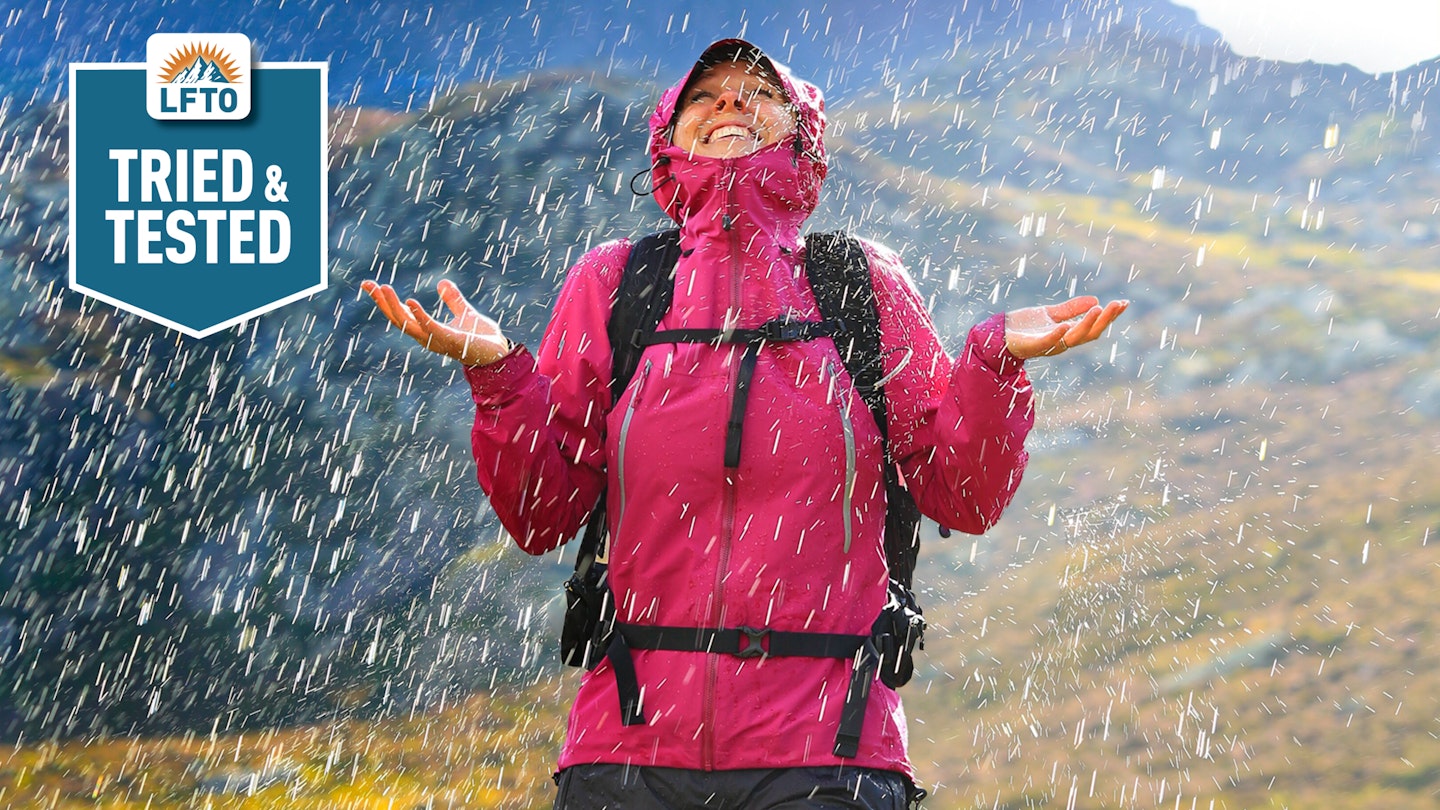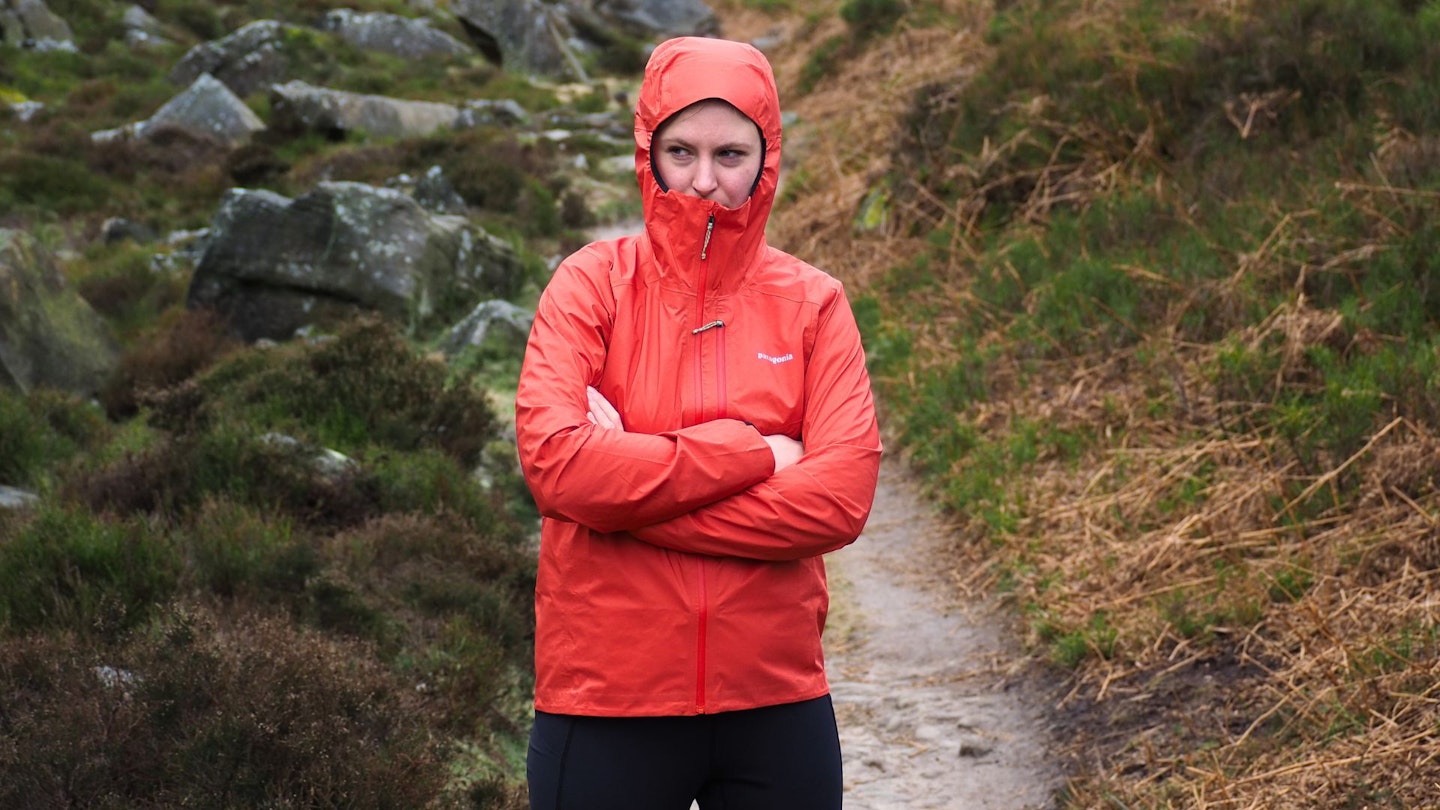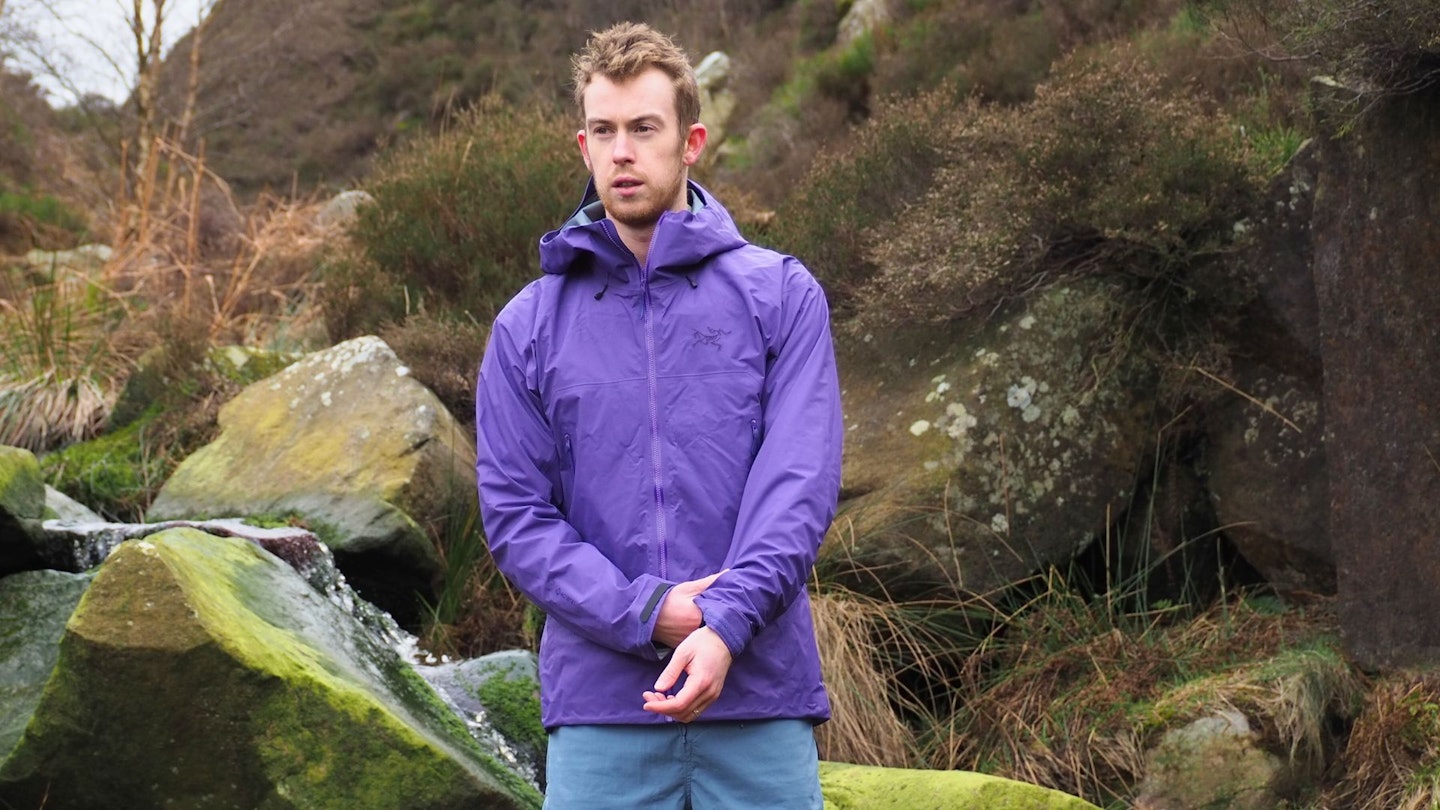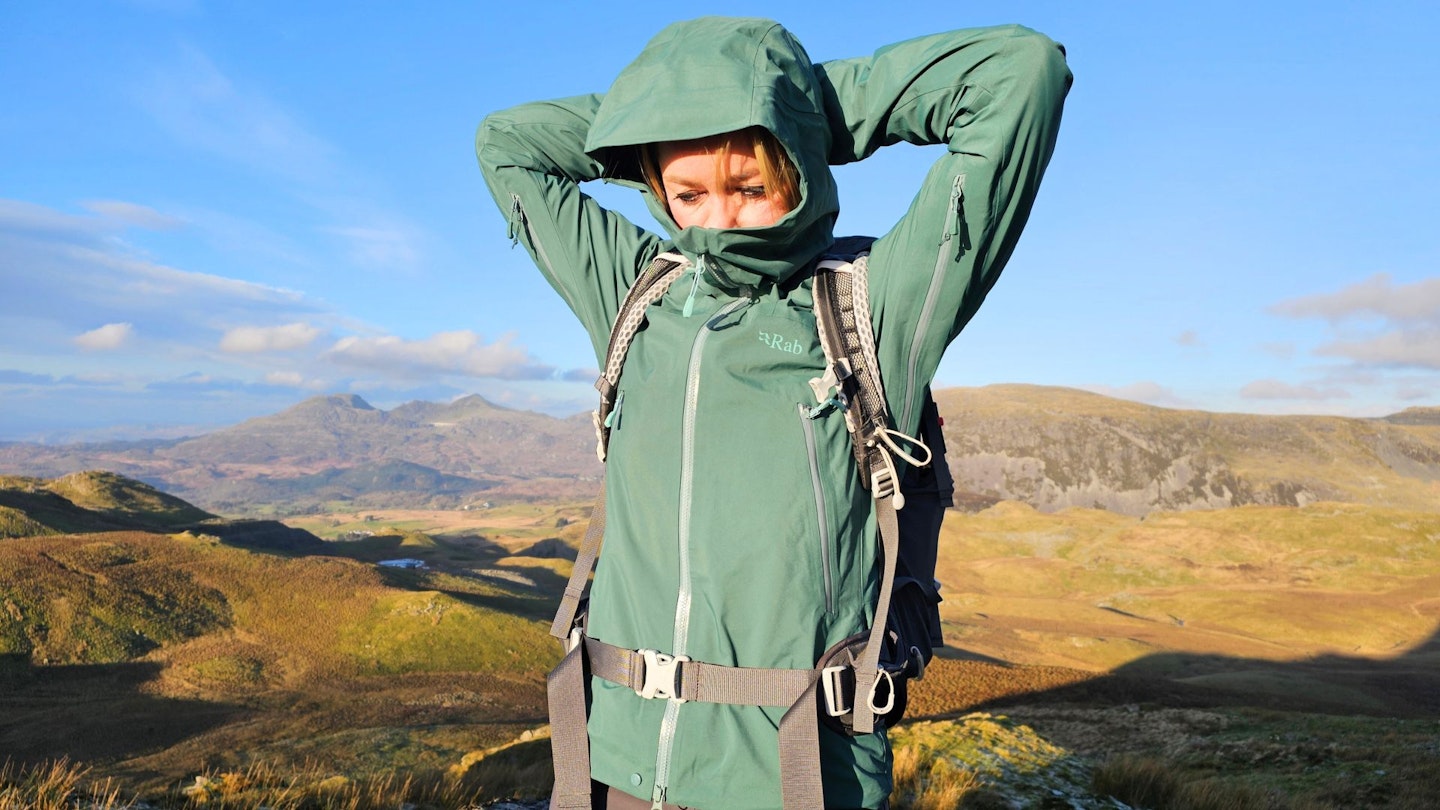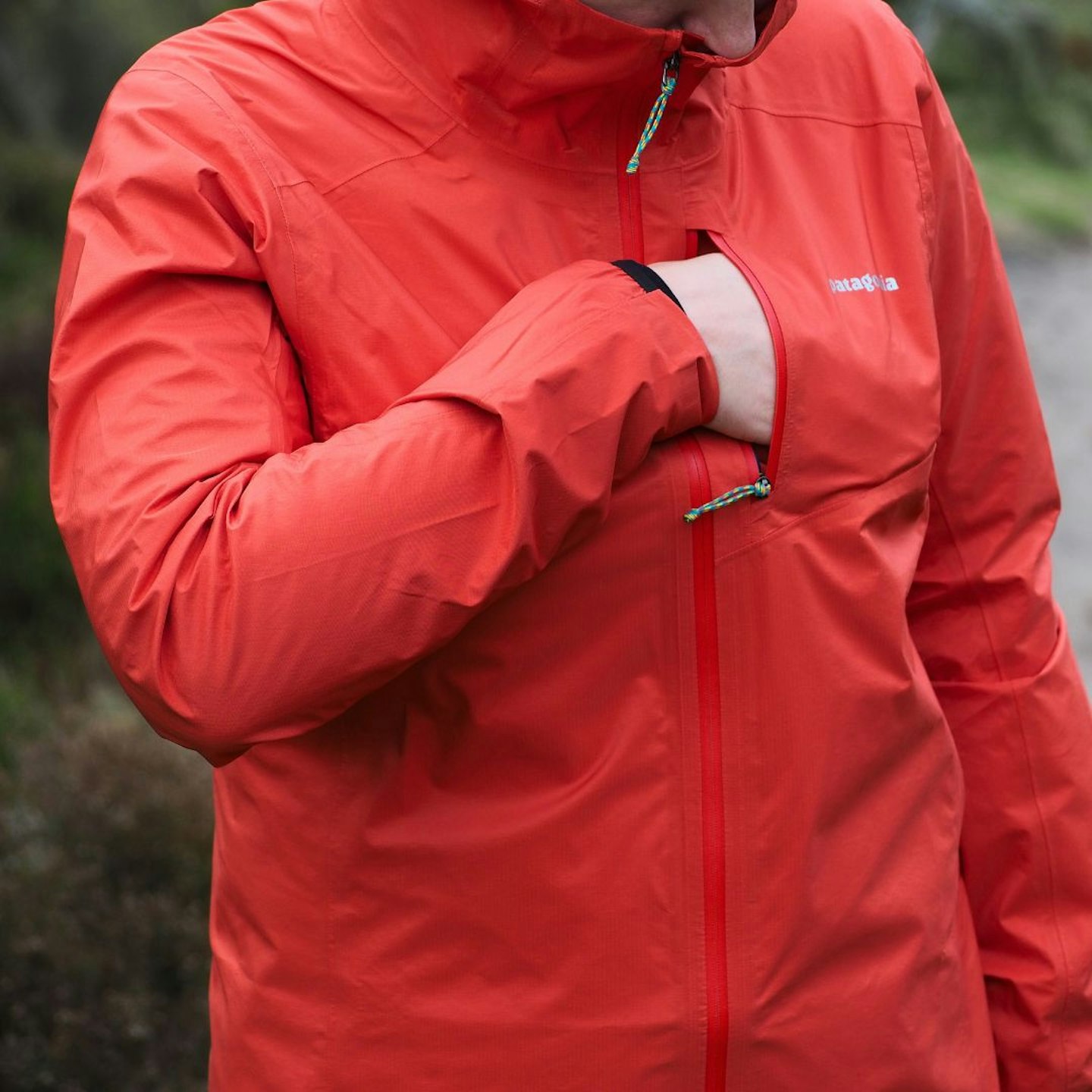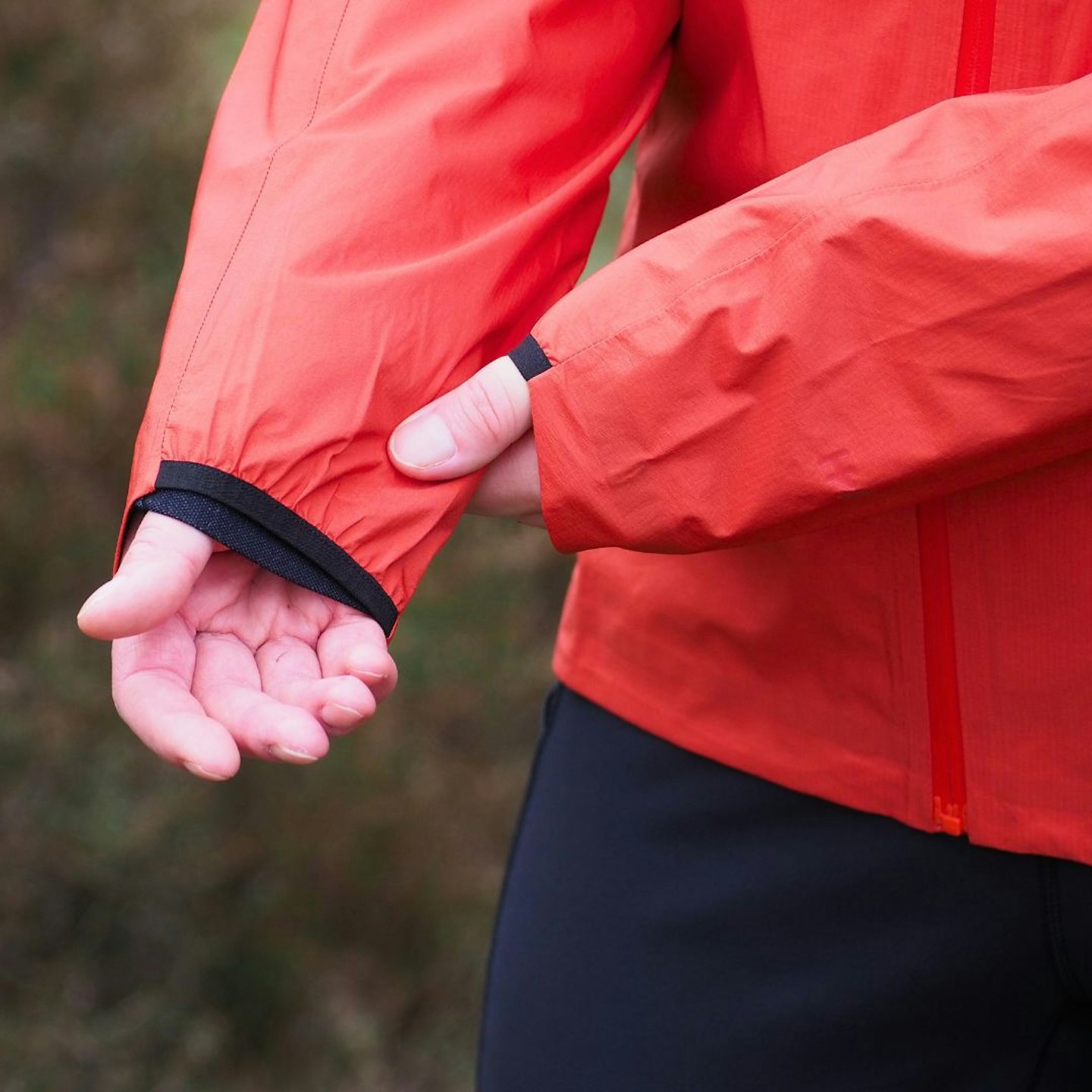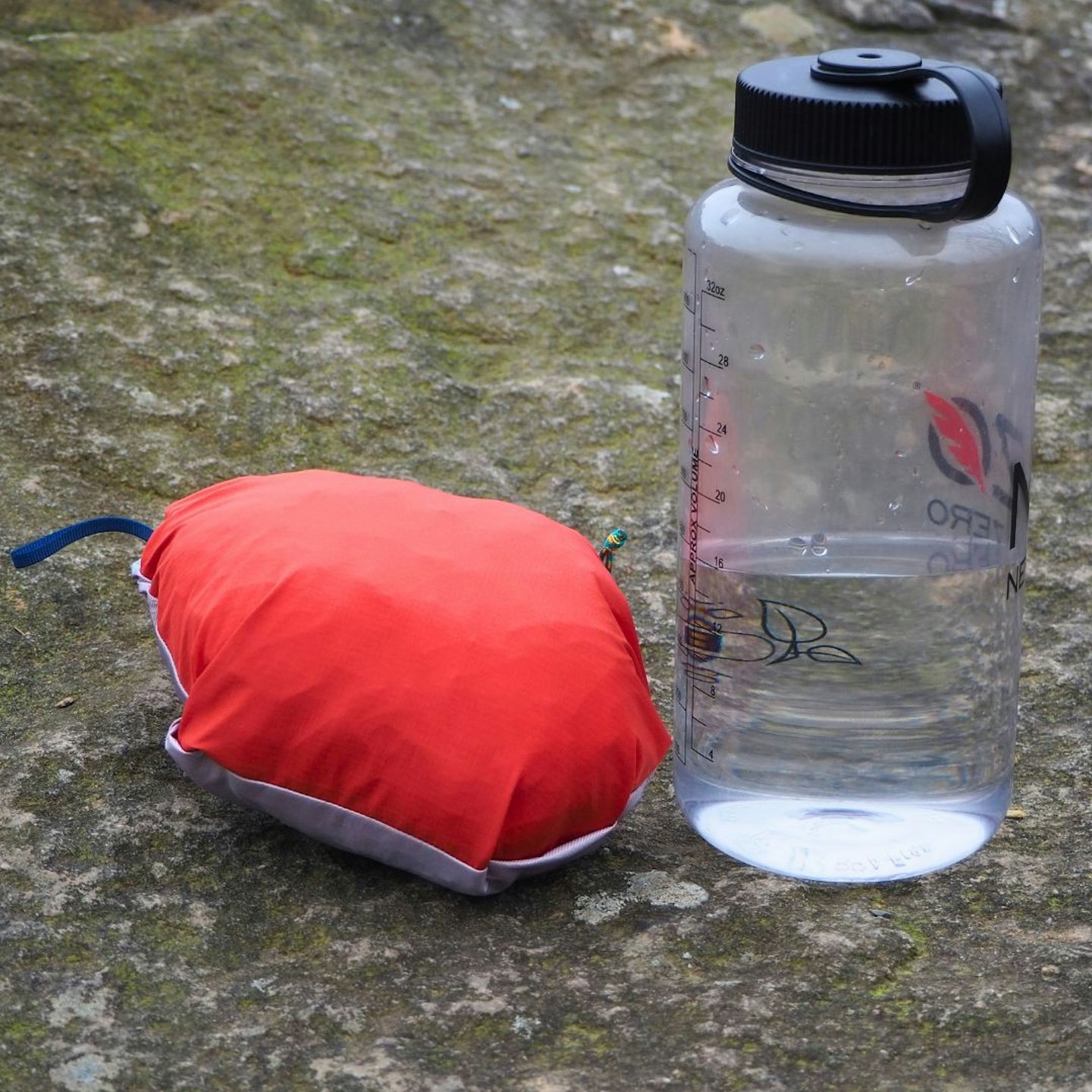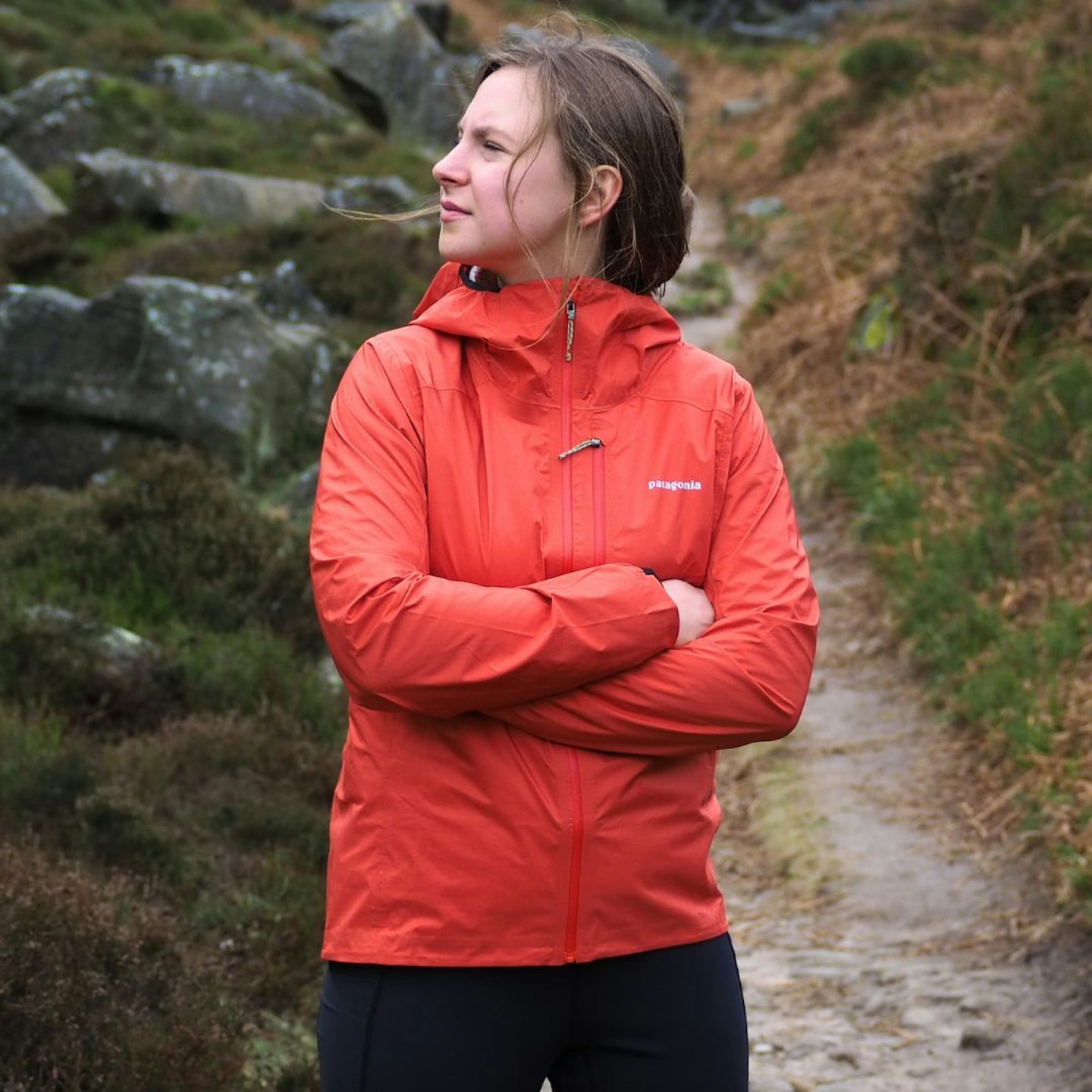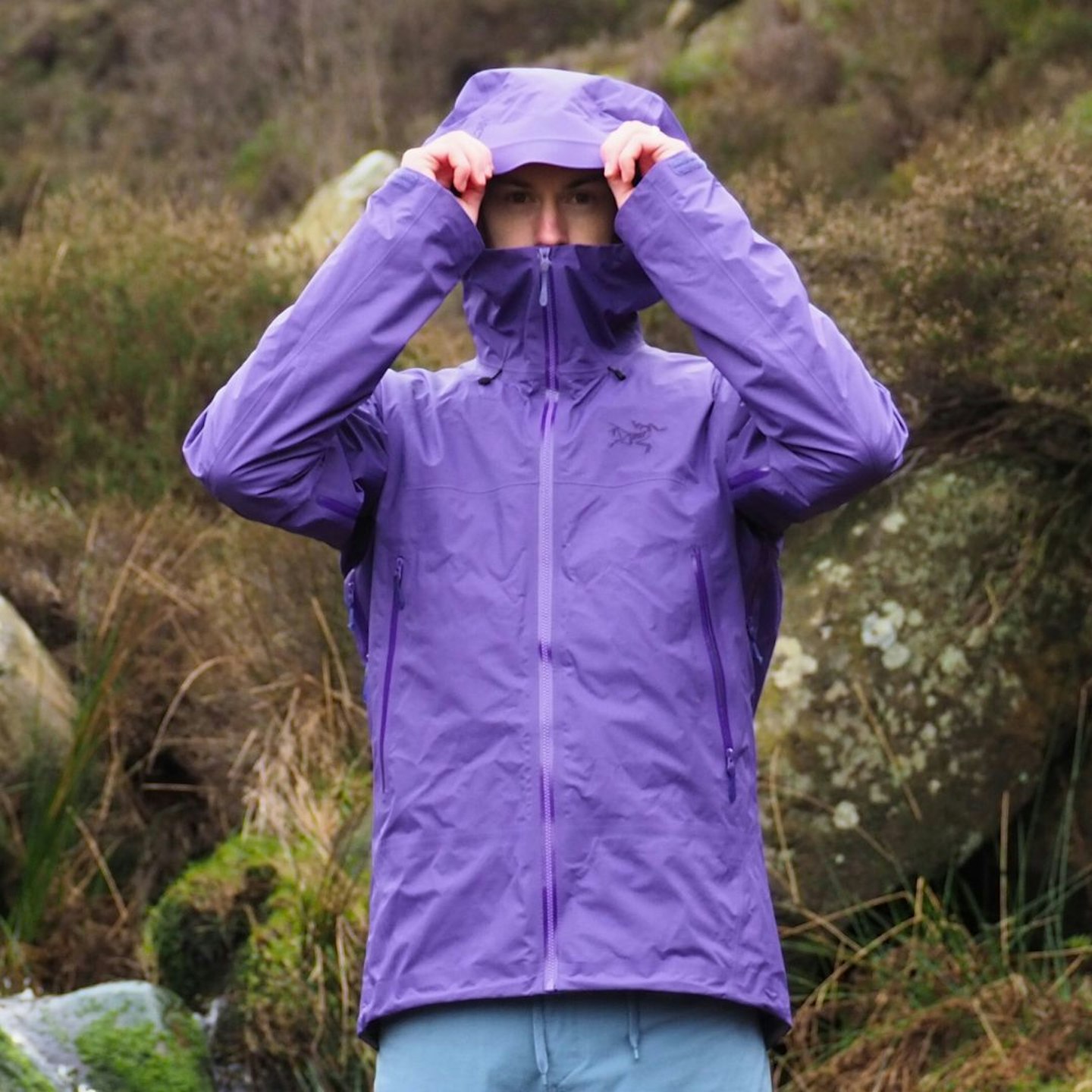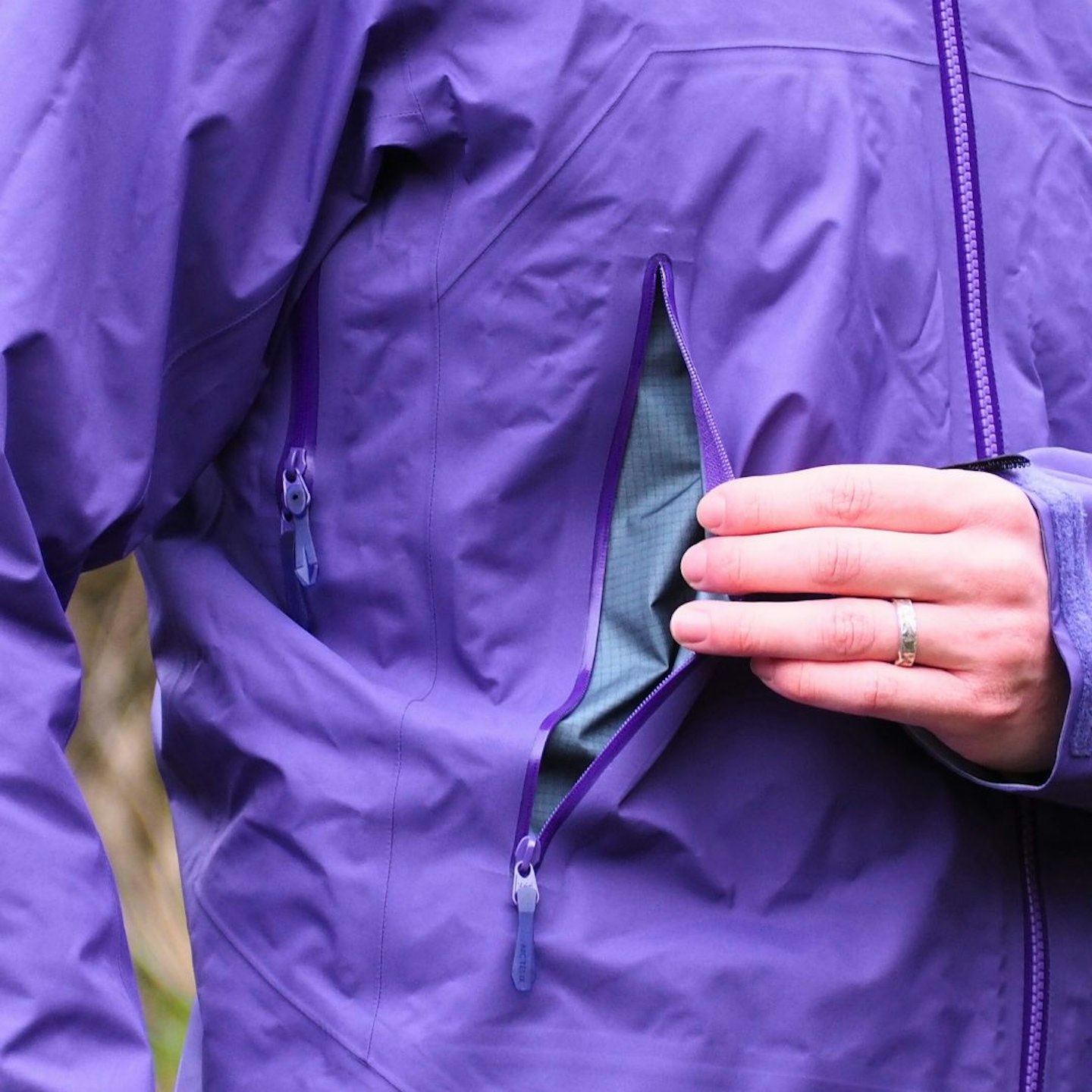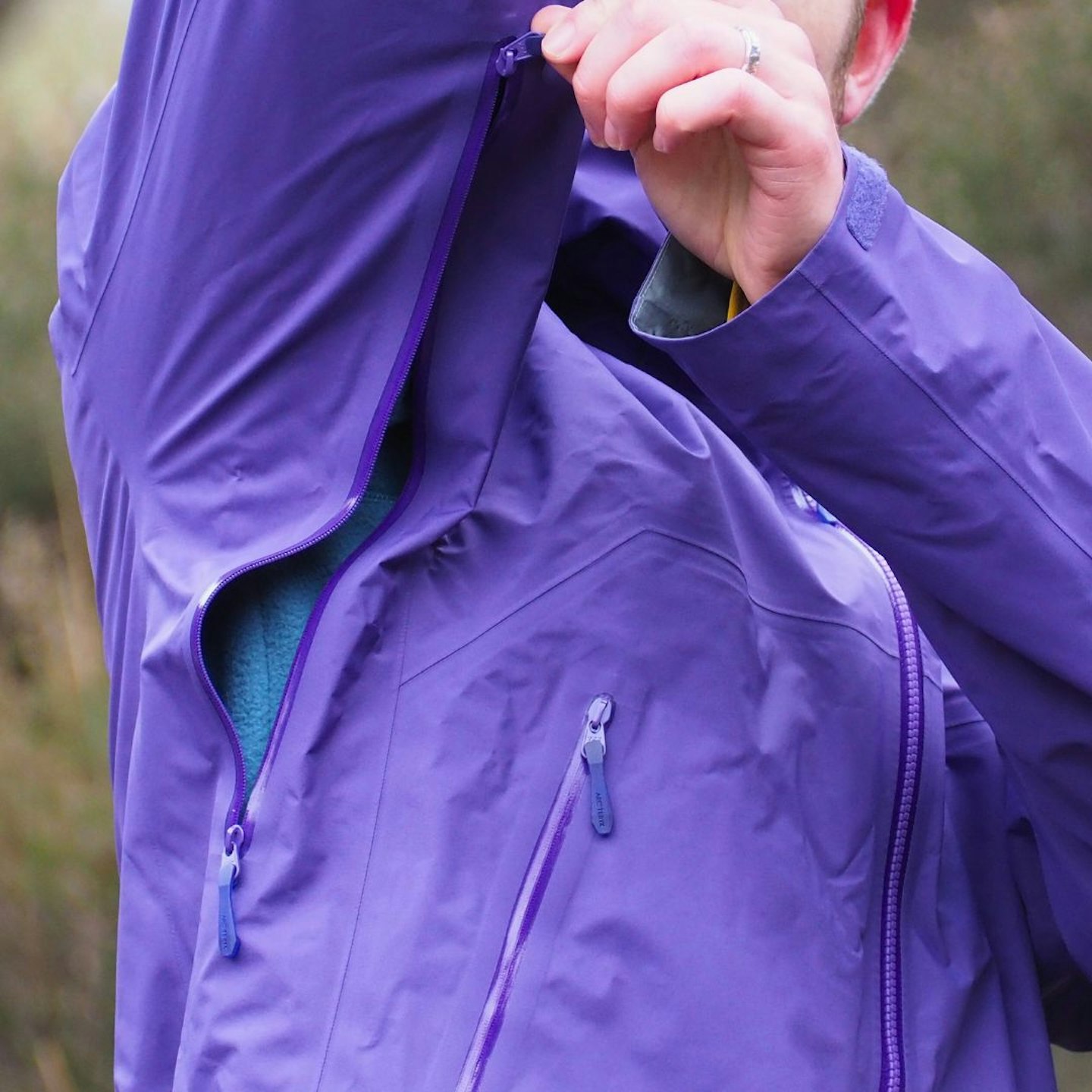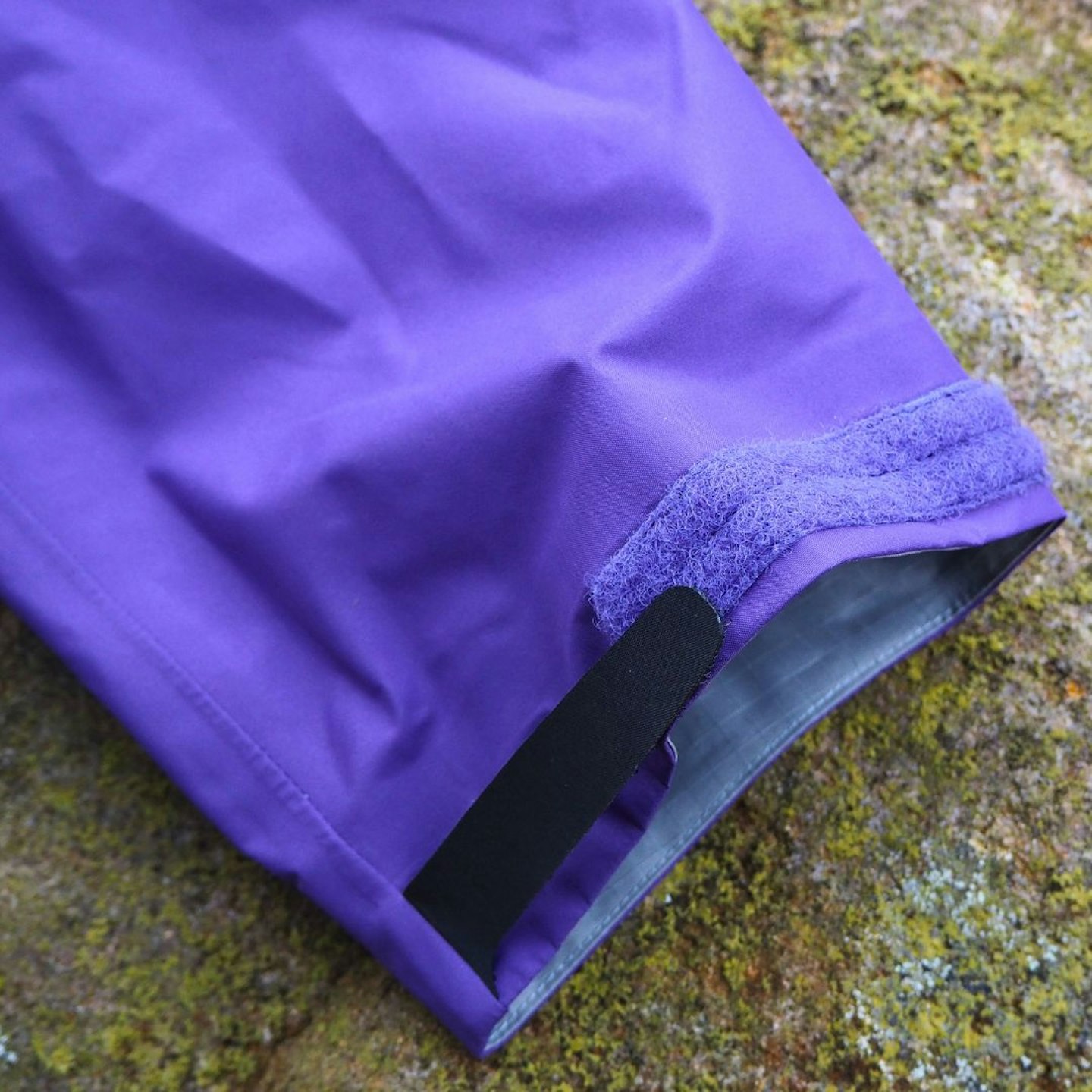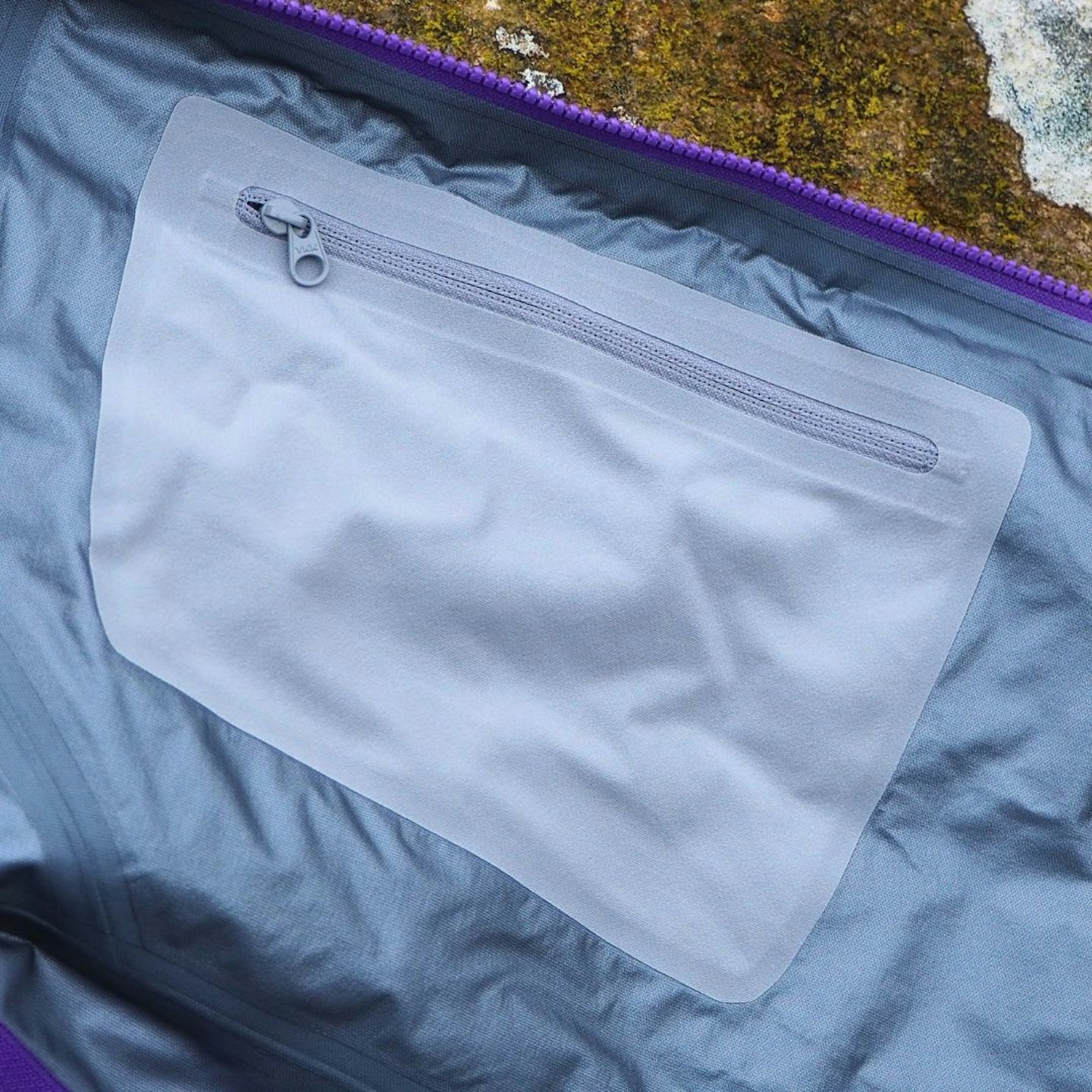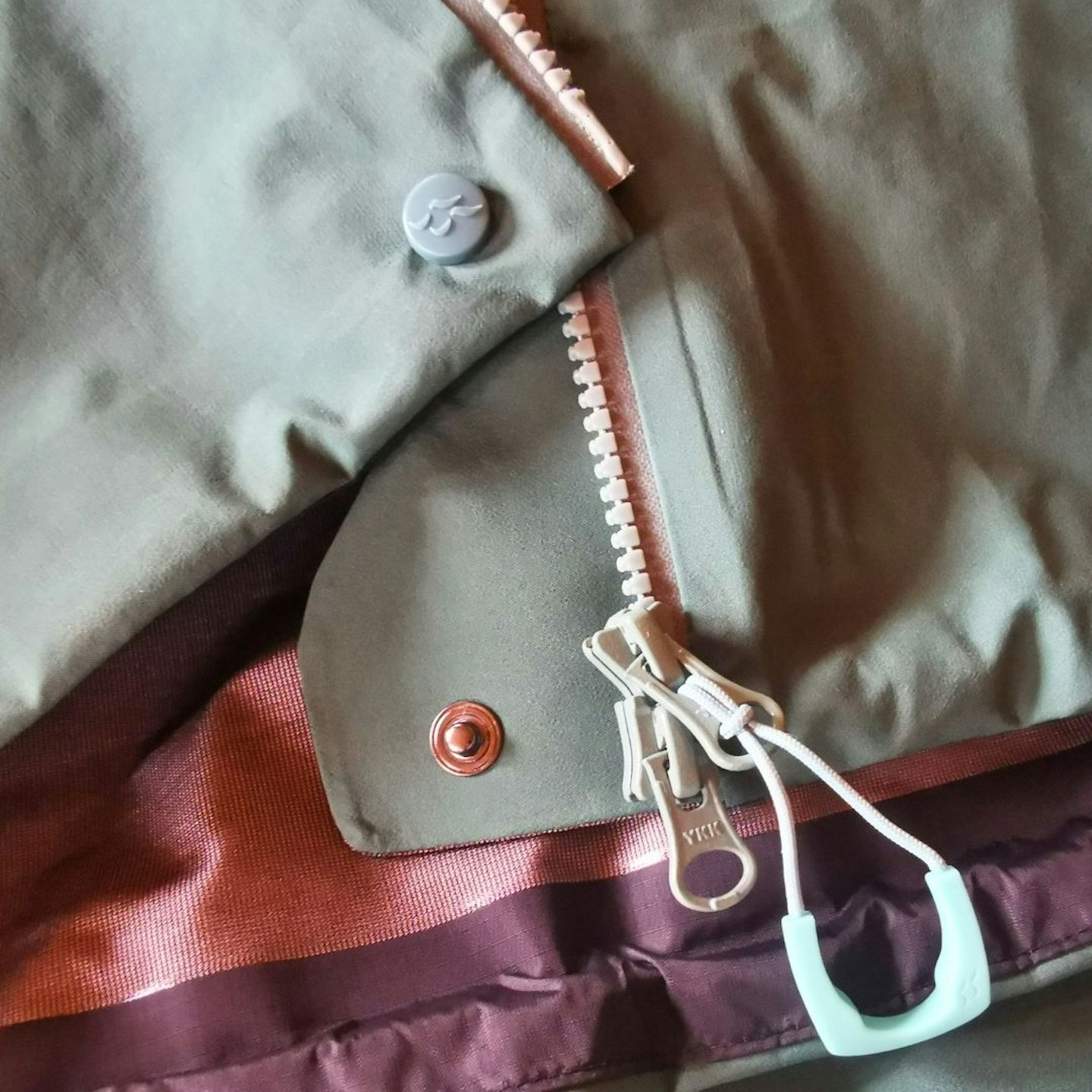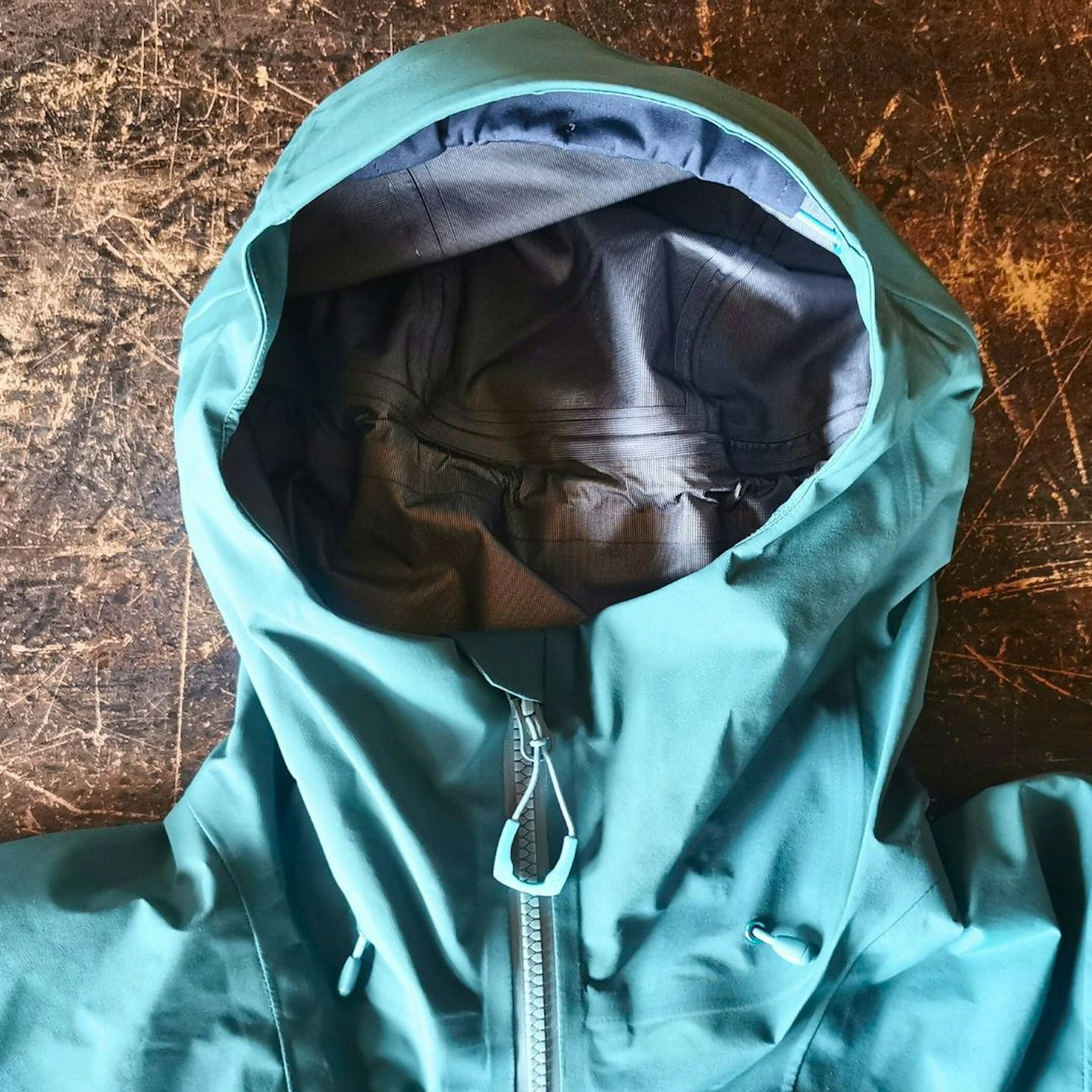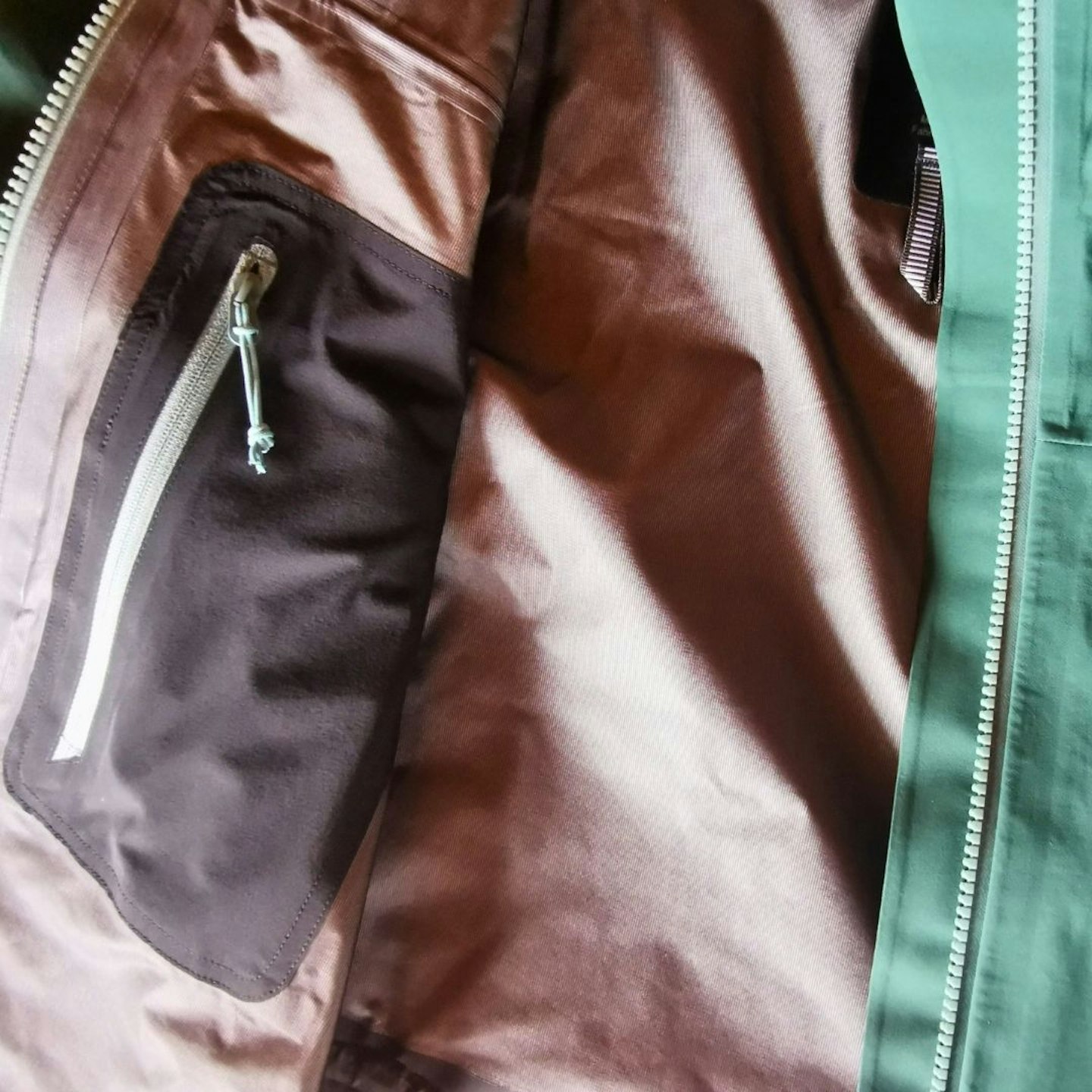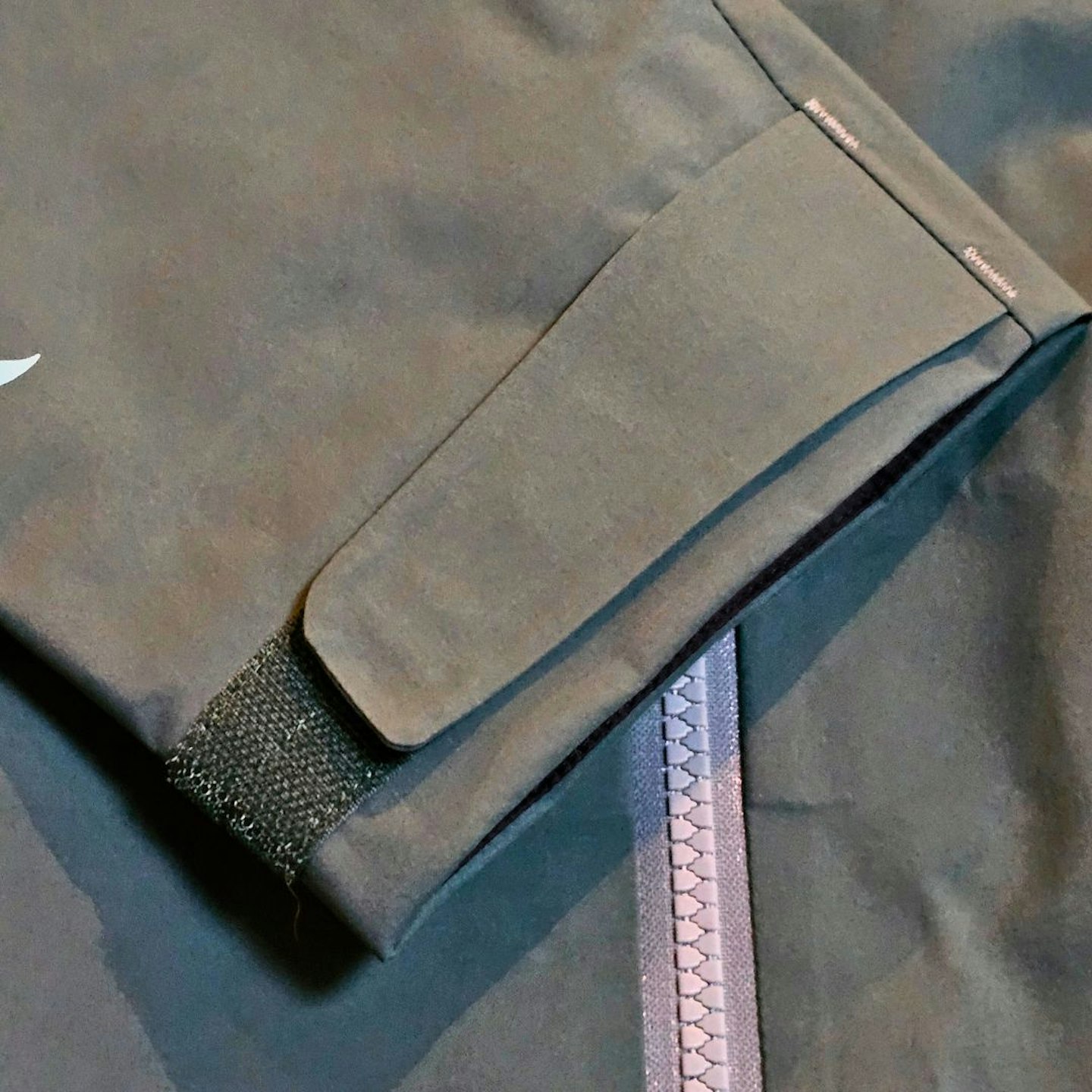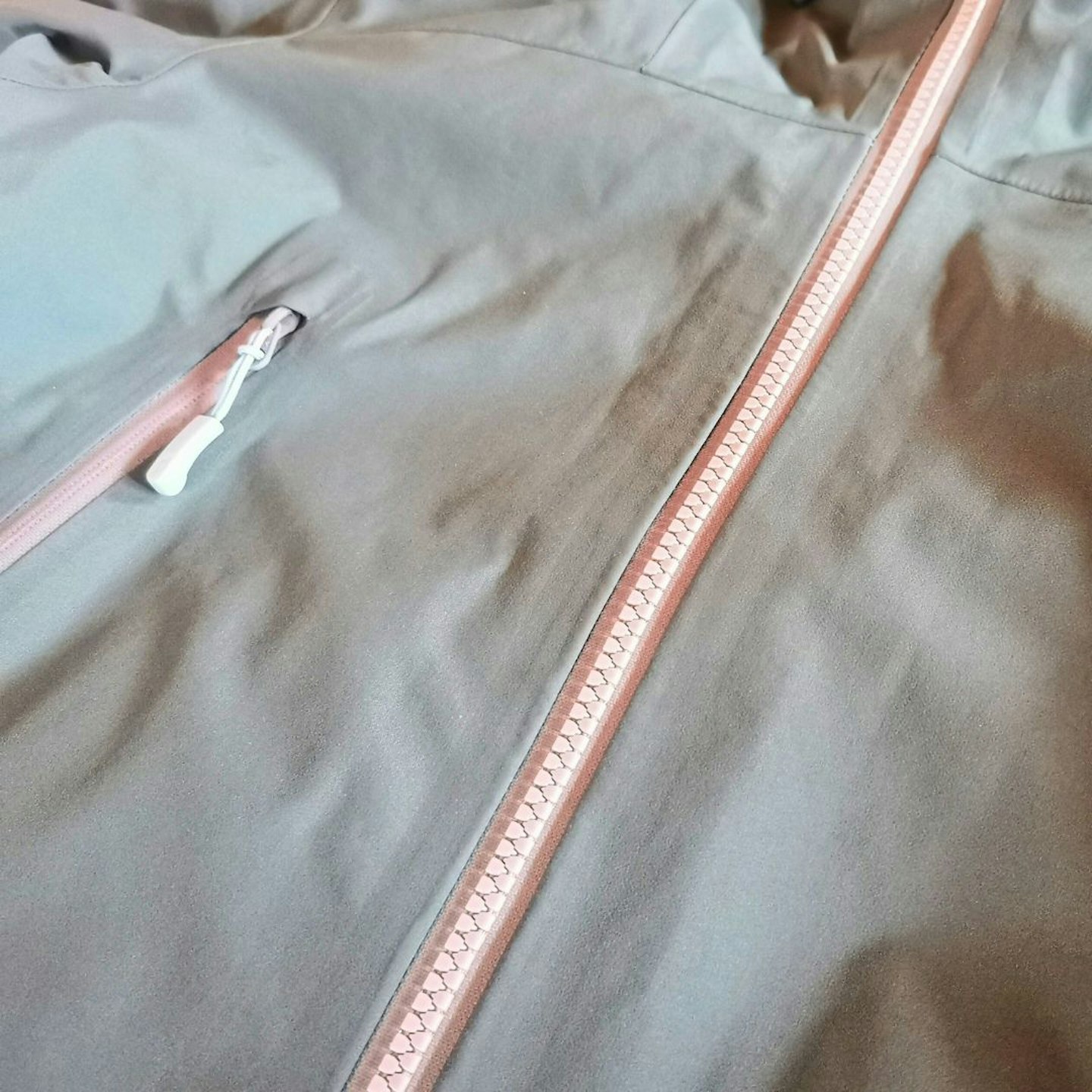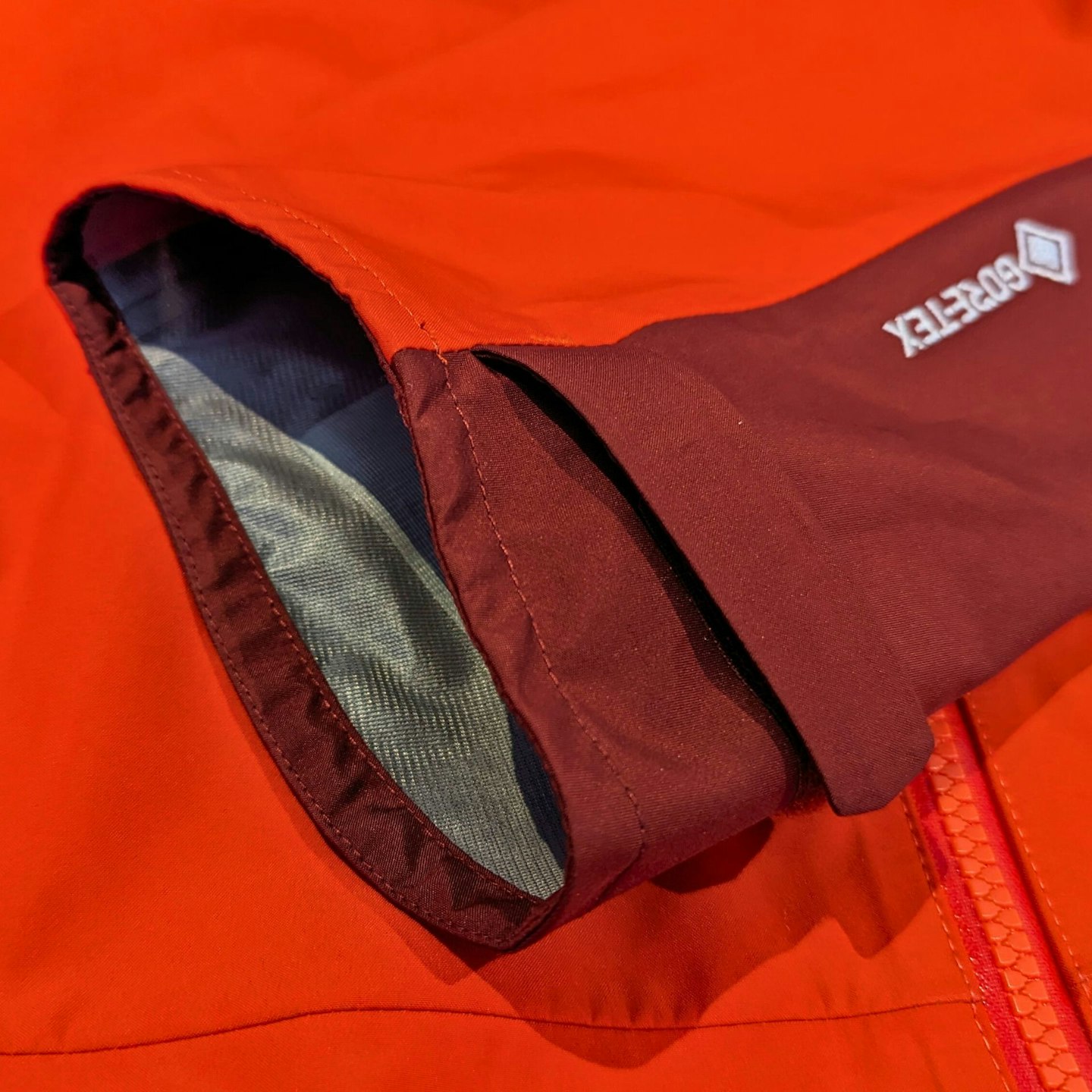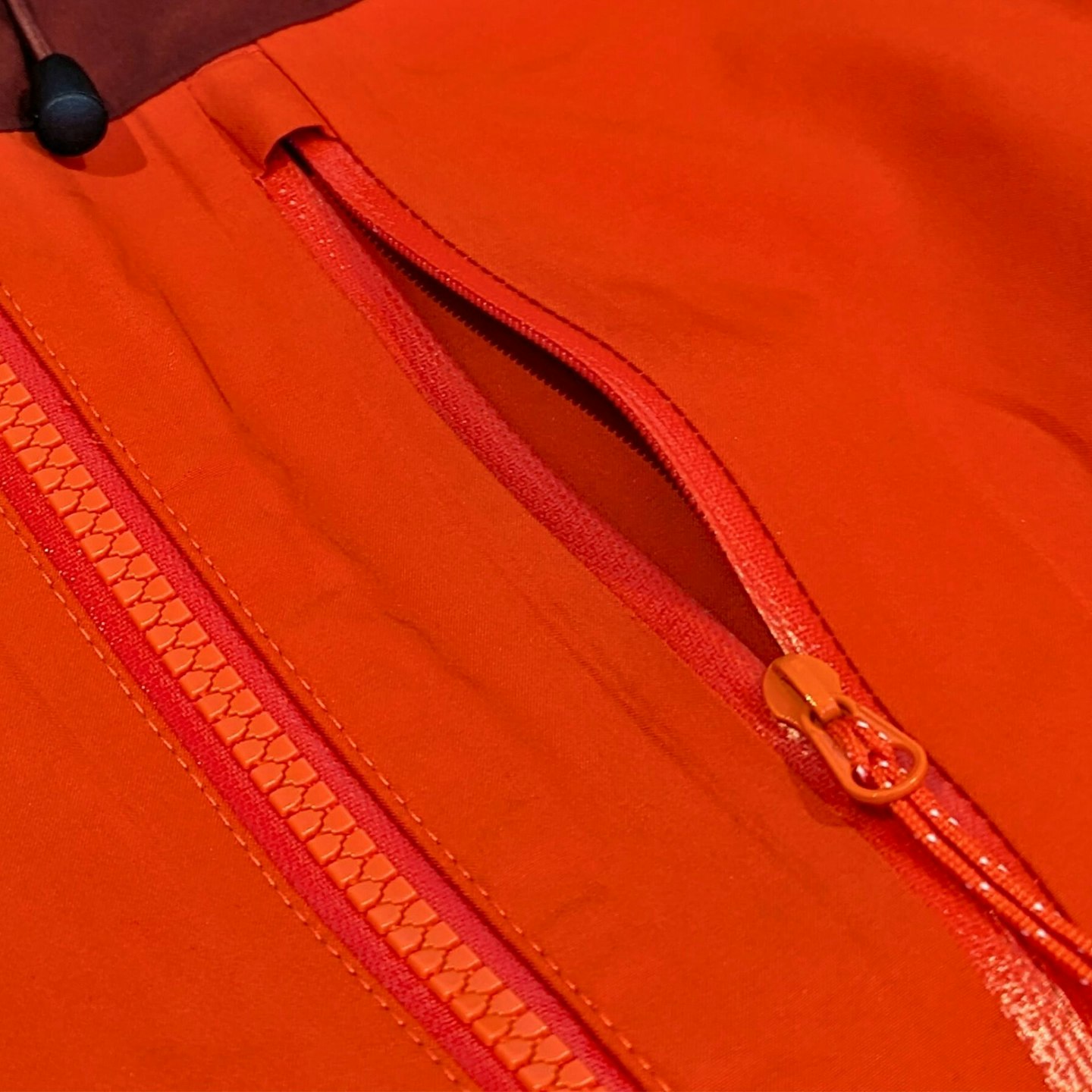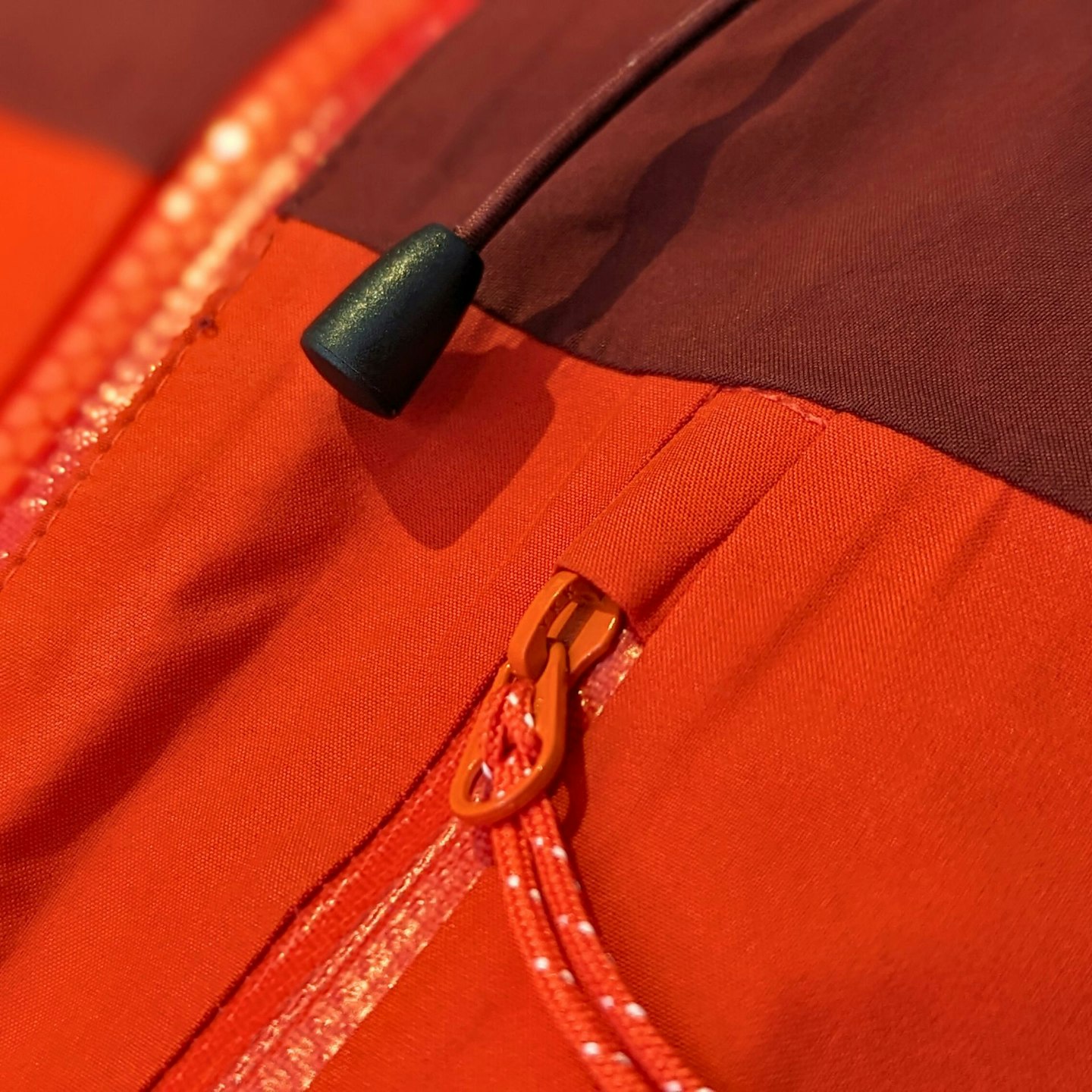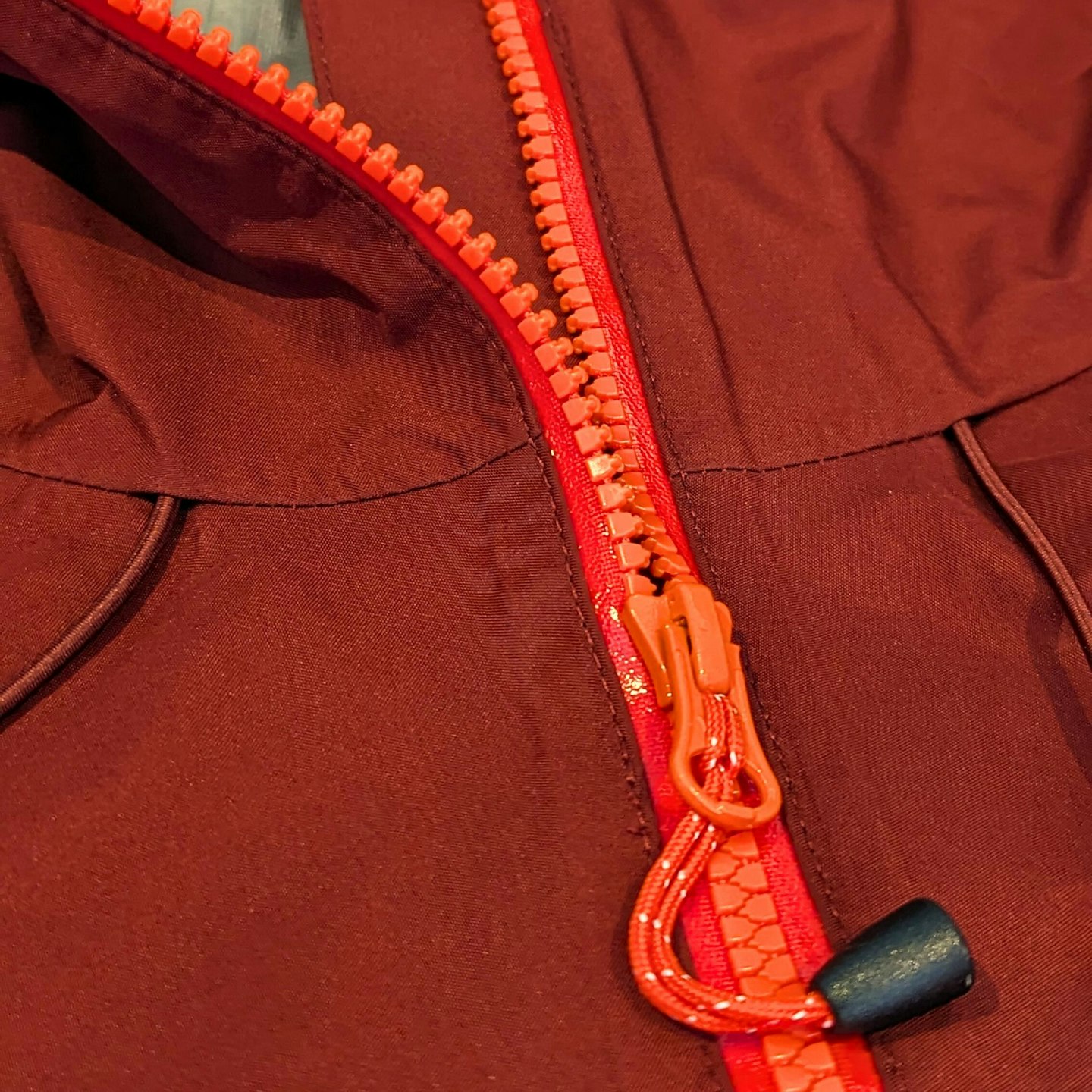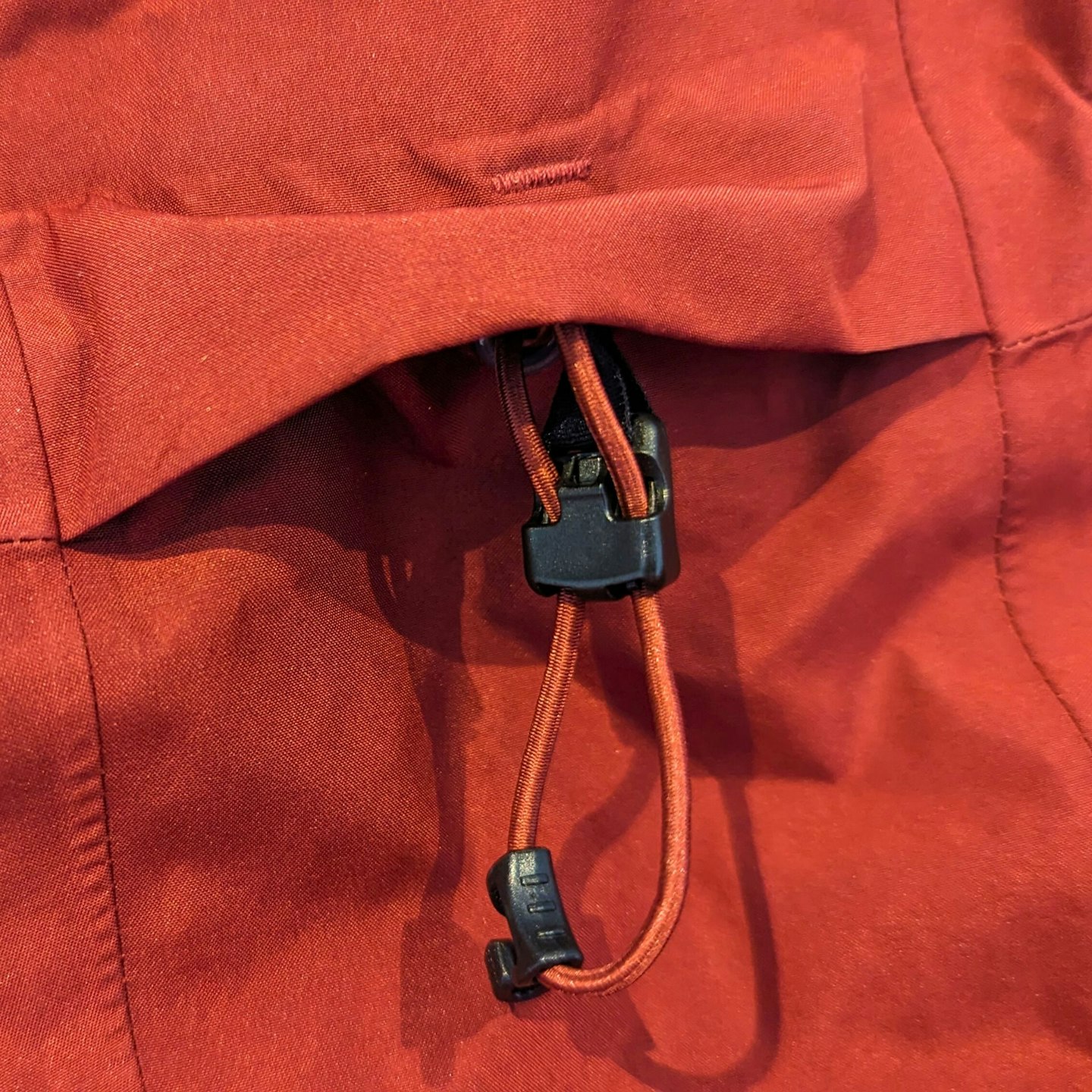There's no type of jacket more essential for any outdoor enthusiast than a reliable hiking rain jacket. Whether you hike regularly in the mountains or mostly walk on local trails, you'll eventually get soaked if you don't have proper rain protection.
So what makes something one of the best hiking rain jackets? It's not an easy question to answer with hundreds of options to choose from and such a wide range of prices, which is why our testers have been hard at work reviewing the latest releases to help you make a decision.
The LFTO and Trail magazine teams have been reviewing hiking rain jackets on the toughest terrain in the toughest conditions for over 30 years – we've probably tested thousands of them to destruction. We know the key features to look for when you're shopping for a good deal, and that's what the guide below is all about.
Editor's note: With so many waterproof jackets released throughout the year, this article and the shortlist below are reviewed and updated regularly. The last update was June 2025.
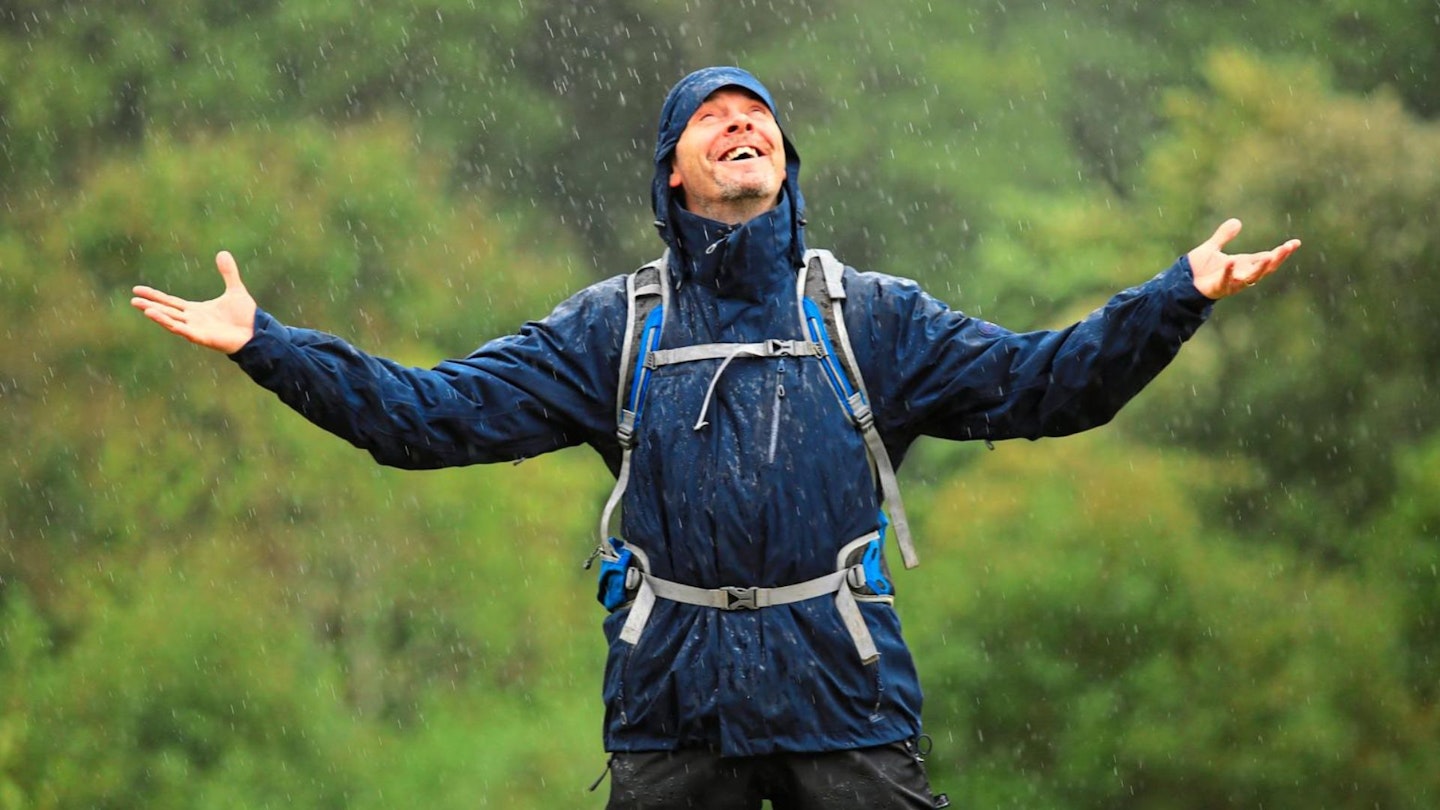
So whether you like a traditional three-season (meaning spring, summer and fall) waterproof jacket, prefer something more lightweight, or want a jacket that can handle alpine winter routes, then our testers have used them and reviewed them below.
In this guide, we explain the different styles and models of hiking rain jackets and give you expert tips on what to look for when shopping for yours. Our testers (see below) have also gone one further and recommended the waterproof jackets we rate best in 2025.
Best hiking rain jackets at a glance
How we tested the best hiking rain jackets

The hiking rain jackets featured on this page are the pick of the bunch from everything the LFTO team has tested over the last 12 months. The bulk of the reviews were carried out by Matt Jones, who's been testing kit for LFTO and Trail magazine for over four years. Matt is based in North Wales and has climbed hundreds of mountains around the world, giving his gear a serious thrashing on every trip.
Other recommendations above come from Ben Weeks, Ellie Clewlow, Nick Hallisey, Fliss Freeborn and Chris Williams, whose testing trips have taken them through all types of terrain and on multiple days on long-distance backpacking trails.
How well a hiking rain jacket keeps out moisture is just the start of what we look for in our reviews. We also test how comfortable and breathable they are; how well they're made in terms of longevity and durability; whether they're sustainable; and how their features work in real-world conditions like the kind of wind and rain that comes at you from all angles in the mountains.
Visit our 'how we test' page for more info on our testers, methods, and criteria.
Best hiking rain jackets reviewed:
This sporty-looking hard shell waterproof jacket from Norwegian brand Helly Hansen does everything right. The original Odin World Infinity won our Best in Test Award at Trail magazine, and the women's version is equally ultralight, fully featured, eco-friendly, and mountain-ready. It’s a top-notch all-rounder with first-rate performance – even if the price is rather, well, Scandinavian.
This jacket features lots of extra bells and whistles compared to your standard hardshell. Nifty features include an emergency whistle attached to the chest pocket and side zips (rather than pit zips) for ventilation when required.
You'll also get a built-in RECCO transponder for rescue situations, but the biggest innovation is the way Helly Hansen has created a 3-layer construction without the use of chemical solvents. The jacket’s membrane also has fewer negative environmental impacts compared to other harmful membrane technologies.
The fit is as good as it can be, with a helmet-compatible hood and a slim, flattering cut which still leaves room for layers underneath. And yes, the price tag is hefty, but the Odin is designed to last, with the brand claiming Lifa Infinity Pro never needs re-proofing.
If you look at it as a long-term investment for your outdoor comfort, then this jacket is a cracking bet for any weather.
Pros
- Permanent, PFC-free DWR
- Excellent performance
- Great fit
- Packed with features
Cons
- Expensive
| RRP: | $600 |
| Weight: | 17.64oz |
| Women's sizes: | XS - XL |
| Fabric: | 3-layer LIFA INFINITY PRO w/ PFC-free DWR |
This sub-7oz waterproof jacket from Patagonia is primarily designed for running, but we liked to use it for fast day hikes as well. We found it's impressively breathable and incredibly packable, whether into a backpack stash pocket or the jacket's own chest pocket.
Despite the incredibly low weight, it's a 3-layer construction and therefore manages to offer an excellent lightweight-durability balance. Although, that said, – it's fine to use with a small or light daypack, but not a jacket we'd suggest using with a larger or heavy backpack.
The very low weight is liberating, and our female tester really liked the slim cut, which she said was flattering and comfy. In terms of waterproofing, the Storm Racer uses Patagonia's own H2No membrane and is perfectly capable of fending off continuous rain.
We liked the eco credentials too. The Storm Racer ticks the recycled fabric box, but is also PFC-free and produced in a Fair Trade Certified factory.
Read our full Patagonia Storm Racer Waterproof Jacket review for further detail and find the men's version here.
Pros
- 3-layer construction
- Sustainable
- Excellent fit
- Ultralightweight
- Stash pocket
Cons
- Stash pocket is a tad small
- Gore-Tex has even higher waterproof rating
| RRP | $299 |
| Weight | 6.3oz |
| Fabric | 3-layer recycled 20D nylon, 7D tricot backer, H2No membrane (20,000mm HH) |
| Men's sizes | XS - XL |
| Women's sizes | XS - XL |
At $400 for a lightweight shell, it’s hard to argue that the Beta Lightweight is a good value buy, but this is one of the most well-balanced waterproofs around in terms of combining low weight and excellent packability with decent weather protection, breathability, and comfort.
The features are pared back to the essentials, but are well-designed. This includes two well-placed, fully lined hand pockets plus a zipped inner chest pocket. The laminated main zip has a small inner storm flap with a soft chin guard, and all the zips have chunky, easy-to-grab pullers.
There are dual hem drawcords, Velcro-adjustable cuffs, and a fully adjustable hood with a stiffened peak. It's helmet compatible, so it's quite large, but does cinch in tight. Indeed, the overall cut is slightly roomier than most European mountain brands, but we loved the longer hemline and sleeves, which provide excellent all-around coverage.
The Beta Lightweight is made from three-layer Gore-Tex C-Knit fabric (an extremely thin circular knit for a less bulky backer) with a 40- and 70-denier ripstop nylon face. It’s soft and smooth and slides easily over other layers.
Top-level waterproof and breathable performance is courtesy of Gore-Tex ePE – the latest innovation from Gore-Tex that does away with PFCs. It offers superb durability and comfort (though, like almost all Gore-Tex membranes, it is slightly crinkly). Moreover, for sustainability, the Beta Lightweight is also made in a Fair Trade Certified factory.
All in all, it’s a quality waterproof fabric that outperforms typical 2 or 2.5-layer rivals like Gore-Tex Paclite, whilst being just as lightweight and packable. There aren’t too many other brands that can turn out three-layer Gore-Tex jackets that tip the scales at just 13oz. It’s an impressive feat.
Read our full Arc'teryx Beta Jacket review for more or see the women's version here.
Pros
- Top-level performance
- Very comfortable
- Surprisingly durable
- Good features
Cons
- Oversized hood
| RRP: | $400 |
| Fabric: | 3-layer 40D, 70D nylon and Gore-Tex ePE w/ PFC-free DWR (28,000mm HH) |
| Men's sizes: | XS - 2XL |
| Women's sizes: | 2XS - 2XL |
| Weight: | 13.2 oz |
The Kangri GTX is a well-established hiker's favorite when it comes to waterproof rain shells built for the rough stuff. With its 3-layer Gore-Tex fabric, it’s designed for hiking, trekking, and easier mountain scrambles.
It features Rab’s smaller mountain hood, which is designed to fit over a bare head or beanie but doesn’t work so well with a helmet. The Kangri is equipped with a two-way YKK AquaGuard Vislon front zip with an internal storm flap, plus laminated pit zips with two-way zippers for ventilation. There are two rucksack-friendly zipped hand pockets and an internal secure zipped pocket for a phone or GPS unit.
The hem can be quickly adjusted with one hand via dual drawcords, while the sleeves have chunky Velcro cuff tabs for a weatherproof seal around the wrists. Unusually, there’s also an internal rear drawcord to cinch the jacket in at the waist.
Though the Kangri has been around for several seasons now, for the first time, it has been updated with a fully recycled face fabric, made from 70D nylon. This is bonded to an ePTFE Gore-Tex membrane, with a soft tricot inner forming a classic three-layer construction.
It’s undeniably a well-built, protective jacket – well suited to cold and wet days. It didn’t leak in any conditions, even in some torrential downpours. In fact, this shell might be overkill for spring and summer use, particularly since its extra heft and bulk take up a fair bit of room in a daypack.
Read our full Rab Kangri GTX Jacket review or see the women's version here.
Pros
- Comfortable
- Protective
- Robust
Cons
- Slightly heavy
- Not the most packable or breathable
| RRP: | $425.00 |
| Fabric: | Partially recycled 70D 3L Gore-Tex (28,000mm HH) |
| Men's sizes: | XS - 2XL |
| Women's sizes: | 6 - 18 |
| Weight: | 1lb 2oz |
The Mountain Equipment Lhotse jacket is a classic among hikers and mountaineers, praised for balancing rugged protection, comfort and weight.
Named after the world’s fourth-highest mountain, it has won multiple awards, including Trail magazine's ‘Gear of the Year’ in 2021.
Made with Gore-Tex Pro, the Lhotse offers a dual-weight design – 80-denier fabric for durability in high-wear areas and 40-denier for flexibility.
Its 3-layer construction provides robust waterproofing (28,000mm hydrostatic head) and good breathability (<6 RET), making it ideal for challenging conditions.
Though slightly heavier than some Gore-Tex Pro jackets, it remains packable and versatile, weighing 463g (men’s small).
Features include underarm ventilation zips, a two-way front zipper, and an alpine fit that allows layering without restricting movement.
The consideration that goes into the hood can make or break a waterproof jacket. The Mountain HC Hood used here is comfortable and unrestrictive, even when worn with a helmet, and can be adjusted from the rear or via two frontal adjusters.
The laminated and wired visor protects your field of vision in high winds or when wearing goggles.
The Lhotse includes three zippered pockets, adjustable Velcro cuffs, and a drawcord hem.
While it uses fluorine-based DWR and lacks recycled materials, its durability ensures it will last through many adventures. Manufactured in Ukraine, it meets Fair Wear Foundation standards for ethical production practices.
See our full Mountain Equipment Lhotse review for more details and see the women's version here.
Pros
- Award-winning design
- Highly protective
- Lightweight
- Good freedom of movement
Cons
- Could be lighter
- No recycled materials
- Use of chemicals in DWR
| RRP: | $749.95 |
| Men’s sizes: | S-XXL |
| Women’s sizes: | 8-16 (Mountain Equipment Manaslu) |
| Weight: | 16.3 oz (men’s small) |
| Fabric: | A mix of 80D and 40D Gore-Tex Pro 3-layer, using a 100% polyamide 6.6 face, ePTFE membrane with Gore Micro Grid backer |
The Makalu has been part of the Mountain Equipment range for a while, but the latest version makes some important changes. Most notably, a new Gore-Tex membrane.
The membrane in question is Gore-Tex ePE - a new membrane that does away with the harmful PFCs the outdoor industry has relied on for years. A decade of development has ensured Gore-Tex ePE is as good as Gore-Tex you know and love.
On test, the Makalu performed brilliantly, especially since it's at least $250 less than many specialist winter waterproof jackets. We found the Makalu's 3-layer 75D construction is durable and comfortable enough to be worn all day, although it doesn't have any stretch.
At around 1.34lbs, the Makalu is also lighter than many rivals, and we definitely noticed that. We liked its long sleeves and protective hood, and in terms of storage, there are pockets aplenty - inside and out. It also has two-way pit zips and a two-way main zip with a chinguard, an inner stormflap and a bottom press stud.
Read our full Mountain Equipment Makalu Jacket review or check out the women's version here.
Pros
- Gore-Tex ePE works brilliantly
- Tough 75D face fabric
- Lighter than many rivals
- Many pockets
- Offers excellent protection
Cons
- No stretch in fabric
| RRP: | $429.95 |
| Fabric: | 75D 3L Gore-Tex ePE w/ PFC-free DWR (28,000mm HH) |
| Men's sizes: | S - 3XL |
| Women's sizes: | 8 - 16 |
| Weight: | 1lb 3.4oz (men's L) |
The Latok Mountain Gore-Tex Pro by Rab is a premium jacket designed for hiking and winter adventures.
Made with 3-layer Gore-Tex Pro (the specific version of Gore-Tex Pro used is called the “most breathable” version), it offers excellent weather protection while maintaining breathability.
Its dual-weight construction uses 80-denier fabric in high-wear areas and 40-denier fabric in the core, resulting in a durable yet lightweight jacket at 17.5oz (men’s medium).
Though it lacks a RECCO reflector and uses fluorocarbons for waterproofing, it remains highly functional.
With a hydrostatic head rating of 28,000mm+ and a breathability rating of <6 RET, the Latok performs well in harsh conditions.
The jacket features underarm ventilation zippers and a two-way main zipper for heat regulation during intense activity. Its design allows freedom of movement, with room for layers and a comfortable fit.
The Latok includes a helmet-compatible hood, fleece-lined chin guard and three zippered pockets, making it practical for various adventures.
Rab’s sustainability initiative highlights that 19% of the jacket’s materials are recycled, although some fluorocarbons are still used. Despite this, Rab is moving towards more environmentally friendly options.
Read our full Rab Latok Mountain Gore-Tex Pro review for more details and find the women's version here.
Pros
- Some recycled content
- More breathable than many Gore-Tex Pro jackets
- Highly durable and protective
- Two-way front zip
Cons
- Use of fluorocarbons
- Not as light as some Gore-Tex Pro jackets
| RRP: | $550 |
| Men’s sizes | S-XXL |
| Women’s sizes | 8-16 |
| Weight | 17.5 oz (men’s medium) |
| Fabric: | Mix of 80D and 40D recycled 3-layer Gore-Tex Pro with Gore DWR; 28,000 HH |
The Arc'teryx Beta AR is a versatile, lightweight (431g, men’s small) Gore-Tex Pro jacket that’s built for a wide range of outdoor activities. It’s part of Arc’teryx’s Beta family, designed for all-around use.
Made with a combination of 80-denier and 40-denier fabrics, this jacket provides excellent durability and protection against harsh weather.
It uses Gore-Tex Pro, known for its rugged performance, and has a minimum 28,000mm hydrostatic head, ensuring top-tier waterproofing.
Key features include a helmet-compatible hood, a storm collar, RECCO reflector for emergency rescues, and adjustable cuffs and hem. Meanwhile, the Beta AR’s long pit zips and front zipper allow for ventilation during intense activities.
Though not the most breathable or packable jacket compared to minimalist options, its durability and full winter protection make it a great investment.
Sustainability-wise, the Beta AR is Fair Trade Certified, bluesign approved, and Arc’teryx is transitioning to PFA-free materials by 2025. However, it still contains fluorocarbons and is not fully PFC-free yet.
The brand argues that the jacket’s long-lasting build makes it a sustainable choice in the long run.
With its high-performance features and commitment to environmental improvements, the Beta AR is a reliable choice for serious adventurers.
Find out more in our full Arc'teryx Beta AR review and find the women's version here.
Pros
- Durable
- Gore-Tex Pro
- Excellent waterproofing stats
- Lightweight
- Integrated RECCO reflector
Cons
- Very expensive
- No recycled materials
- Not the most breathable
| RRP: | $570.00 |
| Men’s sizes: | XS-XXXL |
| Women’s sizes: | XXS-XXL |
| Weight: | 15.2 oz (men’s small) |
| Fabric: | Bluesign-approved N40d and N80d 3-layer Gore-Tex Pro (28,000+ HH) |
The Odin Mountain Infinity 3L Shell Jacket is designed with input from mountain professionals for skiers, trekkers, and mountaineers, offering high durability and protection in tough conditions.
Its standout feature is Helly Hansen’s Lifa Infinity Pro technology, providing waterproofing and breathability without harmful chemicals, unlike most jackets that require DWR treatments.
Built with a 3-layer fabric, this jacket features a hydrophobic face fabric, a Lifa Infinity membrane and a protective inner layer.
It’s rated for extreme waterproofing with a 20,000mm+ hydrostatic head and offers excellent breathability with an MVTR of 20,000g/m²/24hr.
Ventilation is enhanced by pit zips, though it’s heavier at 556g (men’s small), making it more suited for winter use rather than summer activities.
Other features include a helmet-compatible hood, ski pass pocket, powder skirt and RECCO reflector for emergency rescues.
While not the most packable, its roomy fit accommodates layers and it provides good freedom of movement.
Sustainability is a key focus with no PFCs used and no need for re-proofing, though specific recycled content details are not provided.
Ideal for winter adventurers, it’s a durable, environmentally friendly option for challenging conditions.
Take a look at our full Helly Hansen Odin Mountain Infinity 3L Shell Jacket for more and find the women's version here.
Pros
- Good eco credentials
- No PFCs
- No re-proofing required
- Versatile for multiple pursuits
- Highly waterproof
- Durable
Cons
- Pricey
- On the heavy side
- Some features are ski-centric
| RRP: | $700 |
| Men's sizes: | S-XXL |
| Women's sizes: | XS-XL |
| Weight: | 19.6 oz (men’s small) |
| Waterproofing: | Lifa Infinity Pro 3-layer fabric with a PFC-free DWR coating and 20,000mm HH rating |
The Patagonia Granite Crest jacket is made with Patagonia's own H2No membrane, a 3-layer waterproof-breathable fabric, offering a solid 20,000mm waterproof rating.
While effective in light and moderate rain, we felt that the jacket's thin material may not withstand extreme weather as robustly as other membranes like Gore-Tex Pro. Its breathability (20,000g/m²/24hr rating) and underarm zippers provide good ventilation, though performance in humid conditions can vary.
Weighing 13.9oz (men’s medium), it’s lightweight and compact, ideal for fast-paced hikers, and impressive for a 3-layer construction. The trade-off of course is that its thin 30-denier fabric won't be the most durable option on the market.
The jacket fit us well with room for layering, offering comfort and freedom of movement. Features include water-resistant zippers, a helmet-compatible adjustable hood, and functional wrist cuffs.
However, the hood’s flimsy visor and lack of an internal pocket are drawbacks. Being Patagonia, sustainability is of course a standout, with 100% recycled materials, PFAS-free DWR, Fair Trade certification, and eco-conscious production.
Read our full Patagonia Granite Crest Waterproof Jacket review for more info. Find the women's version available to buy here.
Pros
- Recycled materials
- Good feature set
- High levels of comfort
- Quite lightweight
- Premium zippers
- 3-layer design
- 20-20k waterproofing and breathability ratings
Cons
- Lack of rigidity to hood peak
- No internal pocket
- Questions marks over fabric wetting out
- Lack of stiffness to fabric for truly torrential rain
- Pocket zippers are not two-way
| RRP: | $279 |
| Men’s sizes: | XS-XXL |
| Women’s sizes: | XS-XXL |
| Weight: | 13.9oz (men’s medium) |
How to choose a hiking rain jacket – your questions answered
Are waterproof jackets truly waterproof?
Waterproof jackets sit along a spectrum of water resistance, from water repellent up to the best waterproof technologies such as Gore-Tex.
No waterproof jacket is absolutely watertight because the material is porous in order to be breathable, which is essential for user comfort. But some of the more premium waterproof jackets have such high waterproof ratings they can keep you dry in torrential conditions.
What's the best waterproof rating for a waterproof jacket?
Gore-Tex tells us all of its fabrics have a minimum 28,000mm hydrostatic head (HH) rating. This is pretty much the best HH rating you'll find for waterproof jackets. Some brands use in-house proprietary membranes in their jackets, rather than using Gore-Tex, and consequently state their own HH ratings.
For hiking, 15,000mm HH is a minimum. Here, we've only selected jackets with no less than 20,000mm HH.
How breathable does a waterproof jacket need to be?
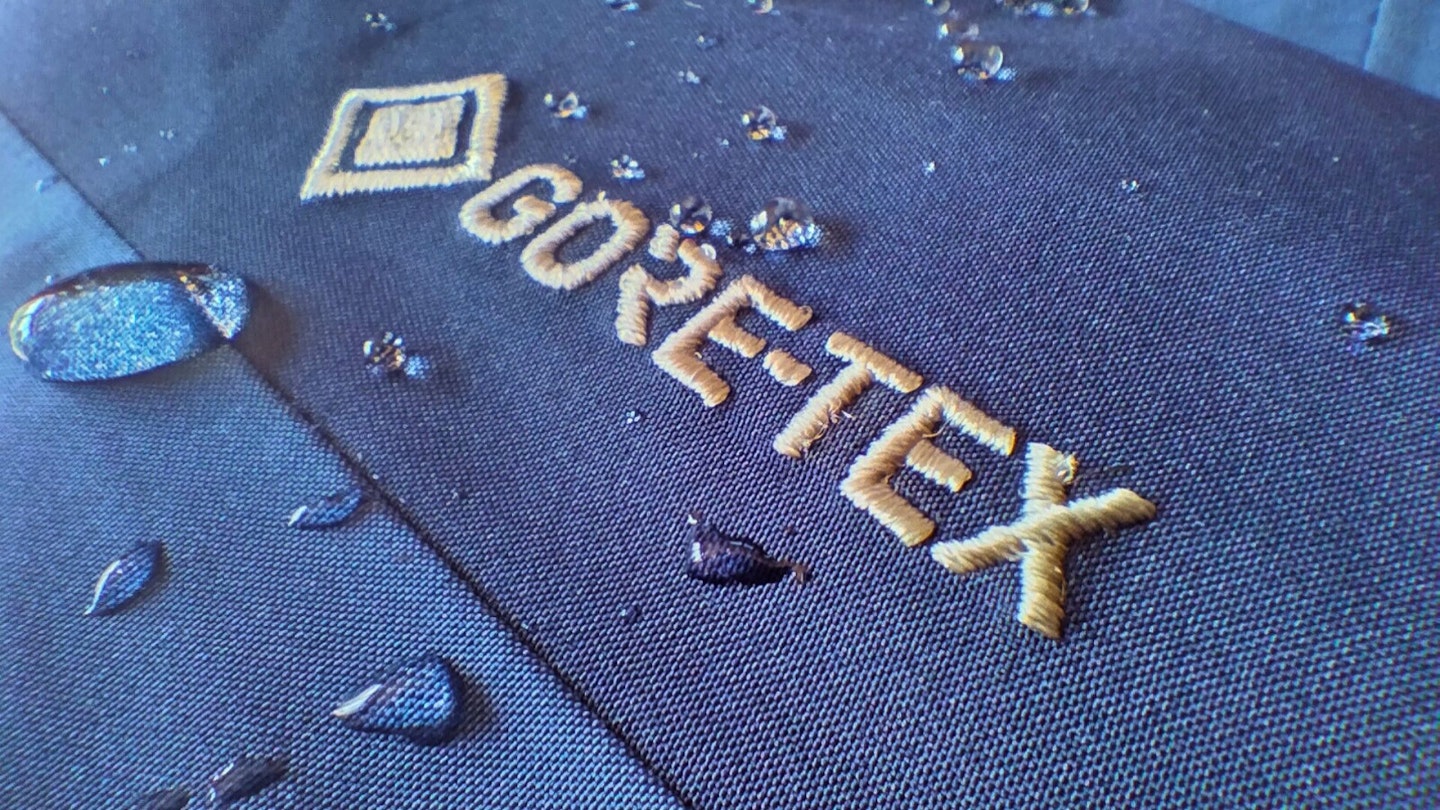
Breathable waterproof fabrics keep rain out but simultaneously allow sweat to escape. It works, but some people believe when you're exercising hard, it's virtually impossible to avoid sweaty condensation.
Breathability is commonly measured by MVTR (moisture vapor transmission rate) in g/m²/24hr. A higher figure indicates better breathability. RET (resistance to evaporative heat transfer) is another, where a lower figure indicates better breathability (a RET value under 6 is considered very good).
What type of construction should my jacket have?
Jackets are generally categorized as 2-, 2.5- or 3-layer, depending on how the waterproof layer is attached to other layers. For poor weather, 3-layer jackets are the most durable, with the waterproof layer sandwiched between a face fabric and inner scrim.
What's the best fit for a waterproof jacket?
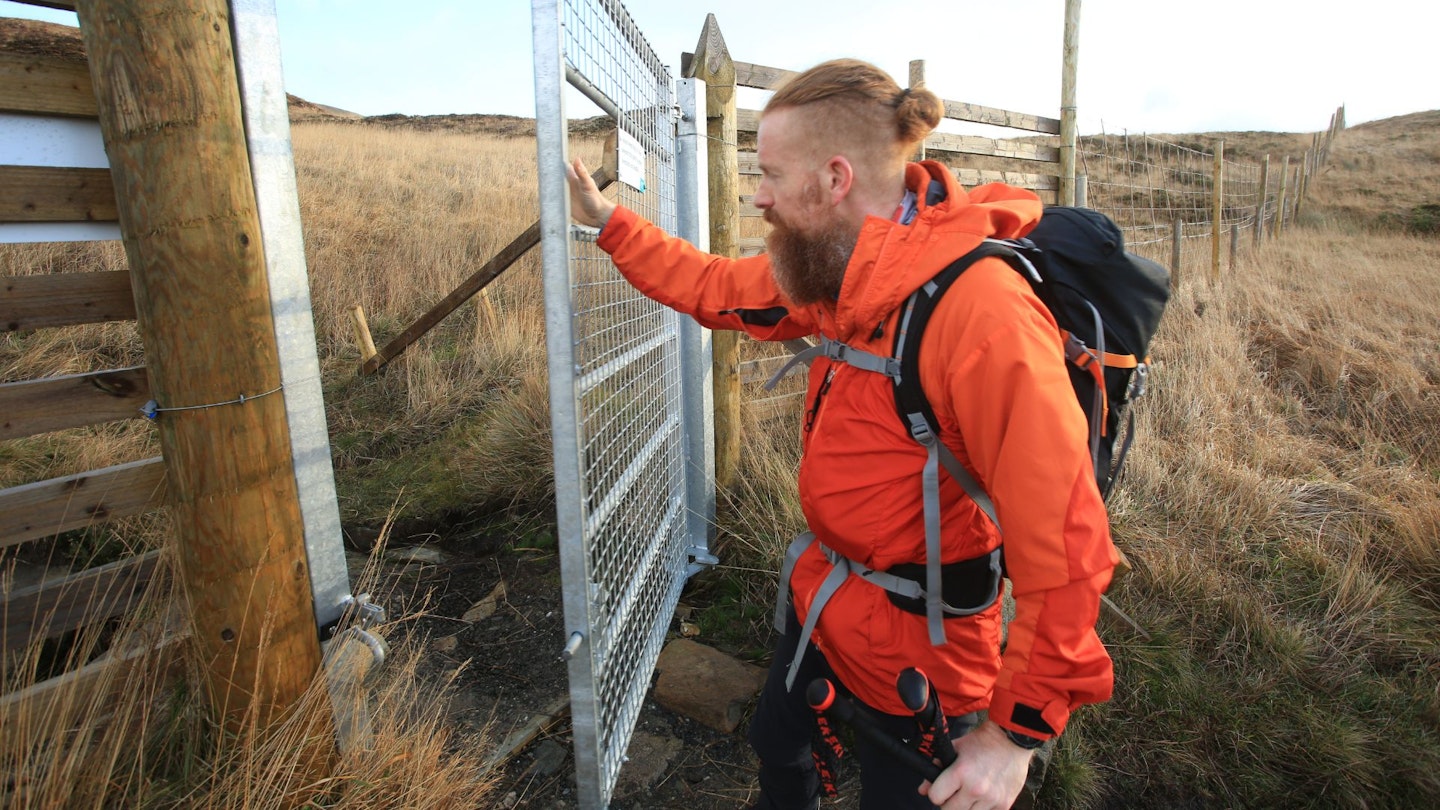
You may prefer a tighter, more athletic fit or a baggier cut with more room for layering underneath. Ultimately, the best approach is to try before you buy. Check the jacket fits your body shape comfortably and gives you ample freedom of movement.
What should the cuffs be like?
Adjustable cuffs sealed with Velcro or toggles or clips are important because they enable a tight fit around the wrist, preventing rain ingress. Elasticized, non-adjustable cuffs are less ideal. You can open cuffs wide to aid ventilation when it's not raining.
How should a hood fit?

A good hood should fit snugly and comfortably but move easily with the head so you can see where you're going. Volume adjustment enables a fine-tuned fit, and ideally, you want a stiffened brim and wired peak to keep rain off your face. Some hoods are oversized for use with helmets.
What types of pockets are best?
Big pockets are great for storing maps, gloves, packs of Haribo and whatever else you intend to put in them. Mesh-lined pockets aid ventilation, but sealed pockets are more waterproof. It's worth checking the pockets aren't obscured by your rucksack waistbelt too.
Do waterproof jackets have extra ventilation?
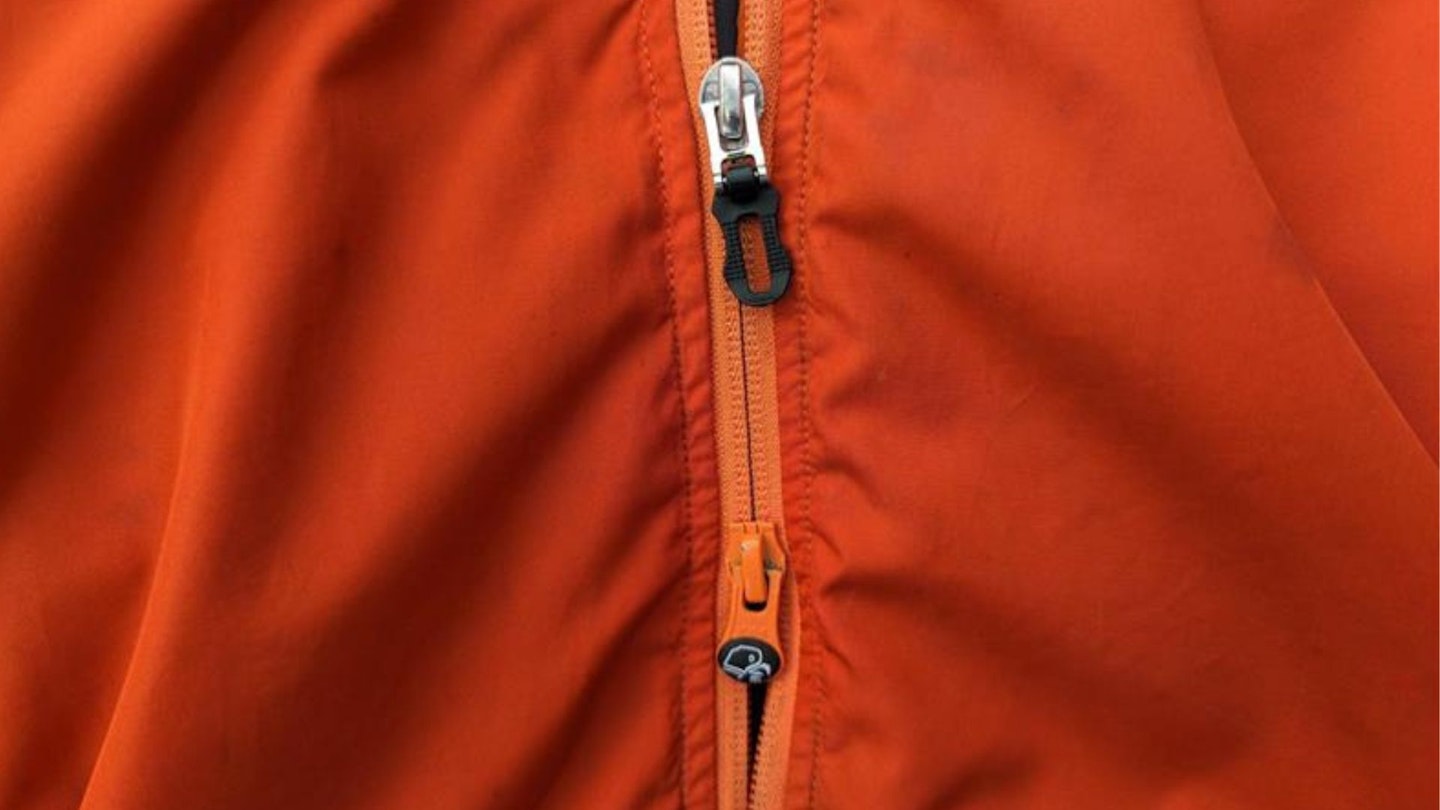
It's easy to overheat wearing a waterproof hard shell, so good ventilation is key. A two-way front zip can be opened from the bottom to improve airflow. Some jackets have underarm/pit zips that allow heat and sweat to escape.
What's the best kind of zip for waterproof jackets?
Zips can be a point of weakness, liable to water ingress. For maximum waterproofing, choose a jacket with a water-resistant zip protected by a sturdy stormflap, either behind or in front of the zip, or both. A zip 'garage' – a little waterproof flap to house the closed zip – also helps keep water out.
How do I clean my hiking rain jacket?
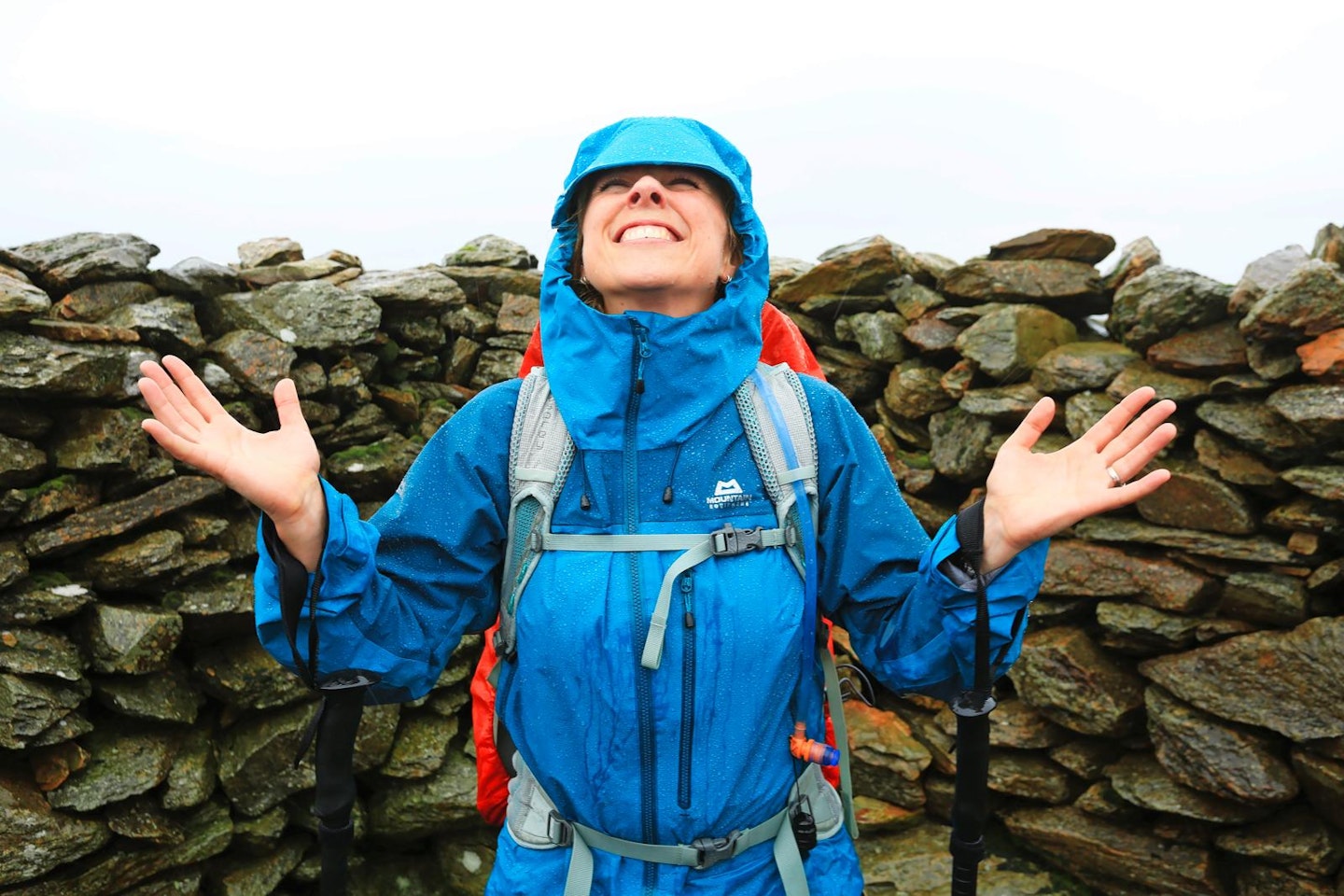
A very common question is 'why isn't my waterproof jacket waterproof anymore?' More often than not, the answer is simply that it needs a clean.
Buildup of sweat and dirt inhibit a waterproof membrane from working properly. Give it a clean with the products below we recommend, either by hand or in the washing machine, and it'll be right as rain.
After cleaning, you might want to reproof your jacket's water repellent coating as well, which can be easily applied with a Grangers or Nikwax spray. Care and maintenance are vital to jacket performance and longevity.
If your jacket does suffer a rip or broken zip and needs a repair, some retailers, brands and specialists offer repair services.
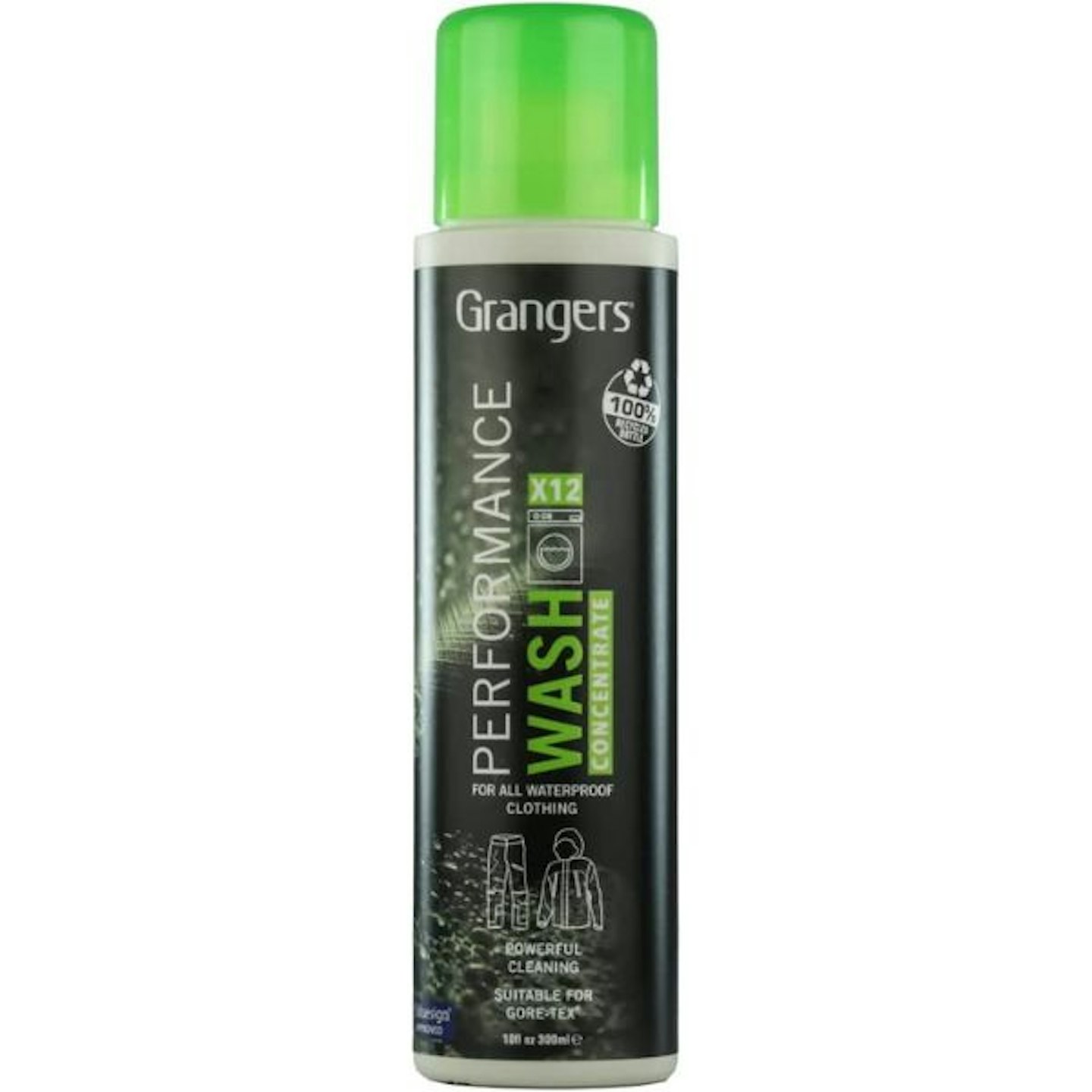
Bluesign approved and PFC-free, this water-based fabric cleaning is ideal for any technical or waterproof fabric, including Gore-Tex. It's highly concentrated too, so a little goes a long way.
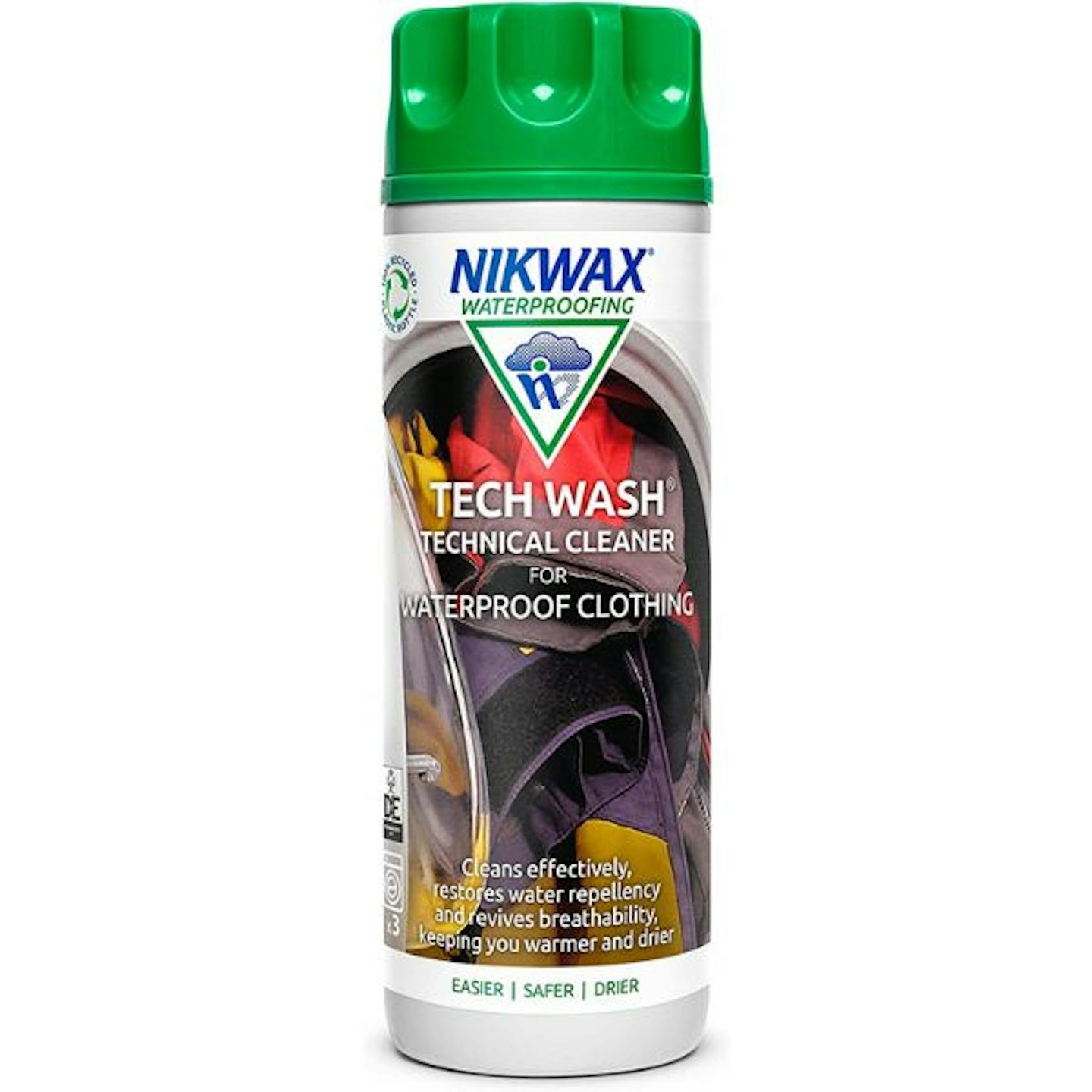
Like Grangers, this is water-based and PFC-free. It too is a very effective cleaner of outdoor and technical garments. Really, there's nothing separating the effectiveness of Grangers and Nikwax.
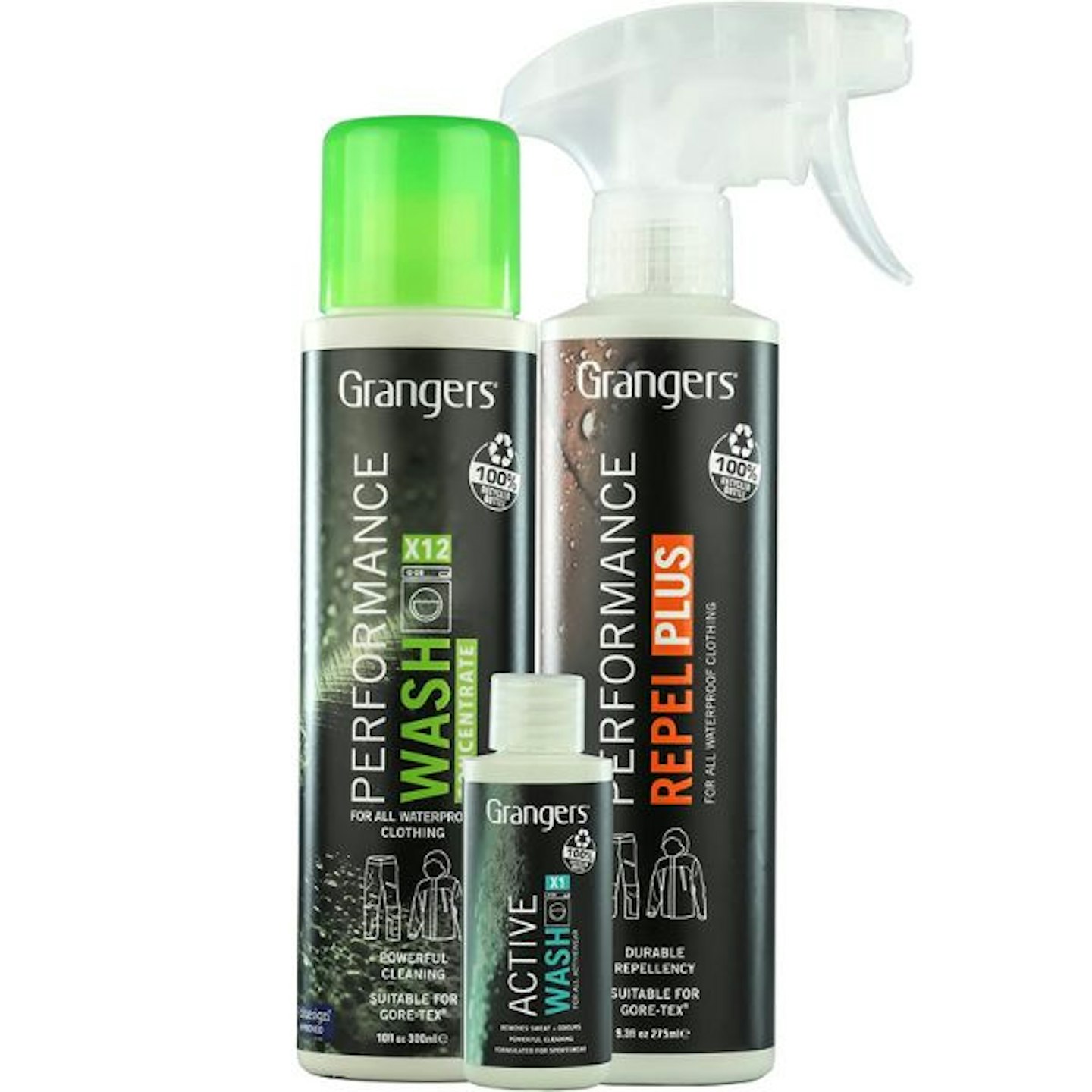
This combo is perfect for cleaning outdoor garments and then adding durable water repellency to waterproof fabrics. The Performance Wash is used like a laundry detergent, while the Repel Plus is a simple spray.
About the author

Matt Jones is a freelance journalist based in the mountains of North Wales, he’s a vastly experienced gear tester and self-confessed outdoor kit geek. Matt’s been one of our main gear testers for the last couple of years and is the first person we call with any complicated kit queries that need in-depth and forensic analysis.
